Legible FORM 23'-2

LEGIBLE FORM: Creating Composite FORMS
DKU DIGITAL ARCHITECTURE 23' FINAL REVIEW
Introduction — Digital Operations in Contemporary Architecture
Since the late twentieth century, architecture has treated the invisible relations between material (structure, matter, fabrication) and immaterial (program, flows, climate, urban data) as an operable system. Within this system, the digital turn has changed both pace and method: rules once implicit in drawings have been made explicit as operations and parameters, and form is recorded as the reproducible outcome of manipulations and constraints.[^1]
In other words, the digital reframes how relations are modeled, measured, and manipulated. Procedural modeling/scripting, performance simulation, scanning/sensing, BIM–GIS–data with version control, real-time visualization/XR, and digital-to-material pipelines together run design as a live feedback loop—Generate ↔ Represent ↔ Evaluate. Each iteration introduces variation; to steer that variation toward convergence, we explicitly separate what must stay (invariants) from what may change (variables).
Here, variables are not arbitrary: they are rule-driven choices within a constrained solution space. A model (or design) separates invariants from variables so that change remains lawful and goal-directed. This does not imprison a project in a rigid system; it enables rapid, repeatable remaking while keeping the gesture (design language) legible under small changes.
Variation — What changes, what must stay
- Invariants: connectivity, operation order, axes/symmetries, spacing rules, non-overlap.
- Variables: counts, spacing, distances, angles, densities, seed-based jitter.
Adjusting variables modulates hierarchy, density, and rhythm while preserving the core reading—silhouette (primary figure), axis, periodicity.
Ex. Most “random” in software is computed and repeatable with the same seed.[^2]
Project — Overview & Aim
Aim. After rapid, open-ended digital manipulations, determine whether the work still expresses a design language closely aligned with the chosen primary gesture, and identify categories of variation and selection criteria that help maintain that reading. The focus is on legibility, remaking, and persistence under small changes, with explicit selection and rationale.
Scope. The project is entirely digital; submissions consist of model files and drawings.
Process
0) Choose & name the gesture
Starting track
- Image-sourced: extract a 3-second reading (silhouette/axis/rhythm/figure–ground) from a precedent/photo/film frame/poster and name it in one sentence.
- CAD-language-sourced: adopt a basic transform as a drawing behavior—Move (stepping rhythm), Copy (interval field/echo), Rotate (fan/radial drift), Scale (graded emphasis).
1) 2D — Build a readable gesture (individual)
Tools (2D). Move, Copy, Rotate, Scale (Mirror optional). Use/compose profile curves that carry the design language. Loop (6–12 frames).
- Place a simple figure that carries the gesture
- Apply a small move/copy/rotate/scale
- Observe: does the same reading persist? Where exactly?
- Snapshot + overlays (arrows/axes/interval ticks)
- Adjust and repeat
2) 2D → 3D component (individual)
Goal. Lift the same gesture into 3D while preserving its core reading (silhouette/axis/periodicity).
Tools (3D). Continue Move/Copy/Rotate/Scale; allow surface tools as needed: ExtrudeCrv, Loft, Sweep (no complex surfacing required).
Checks. Fix a primary view and ensure it retains the 2D silhouette/axis; define strategies to maintain the reading in other views. Annotate where hierarchy, density, and rhythm shift in 3D.
3) 3D composition (team)
Goal. Place distinct gestures from individual components together in a shared space and examine the events and primary readings that emerge.
Tools. Move/Copy/Rotate/Scale; allow Boolean operations for composition.
4) Digital tectonic translation (team)
Intent. Propose a digital fabrication assumption (no physical making) and express it inside the model; examine how the assumed making logic affects the reading.
On the sheet, state:
- Emulated material family: sheet / line / volume
- Fabrication mode (digital): e.g., 2D Fab (sheet logic), 3D Fab (volumetric logic)
- Rationale for mode selection: why this mode supports the intended built reading
Deliverables
- Key Gesture Drawing
- Process Drawings (2D loop, 6–12 frames)
- Orthographic Drawings (primary views for 2D→3D; annotated)
- Model file (.3dm) — with layer segregation
- Make2D set — front / oblique / plan + one shaded viewport capture
- Reflection (1 page) — what preserved/degraded the reading; how the digital-tectonic assumption shifted hierarchy/rhythm
Viewing prompts (for this page)
- What reads from the gesture (silhouette/axis/center)?
- After small variation, does the same reading persist; where is it located?
- In 3D, which view conveys the same gesture best; what changed?
- How do digital tectonics (thickness/joint/tolerance assumptions) shift hierarchy and rhythm?
Work card template
## [Title]
Primary gesture (design language):
Starting source:
Reflection (3–5 lines):
Caption & credit rules
Title — Name A (Year 2), Name B (Year 2) | Media: DigitalSupplement A — Context
Modern architecture has framed the relation between materiality and immateriality as a system. Digital tools have systematized self-replication, parametric schemas, and algorithmic procedures; more recently, machine learning has supported concurrent studies of form generation and manifestation. This course centers on a readable primary gesture and uses rapid, small changes to test whether the same reading persists, presented through drawings rather than parameter disclosure.
Supplement B — Course Focus
Using Move/Copy/Rotate/Scale, we introduce small, emergent variation and examine the persistence of the gesture’s reading. We then perform a digital tectonic translation—assuming thickness and joints in the model—to observe how making logic shifts the reading. Emphasis is on drawings that show where the gesture reads and concise annotated sequences.
Supplement C — Extended Rationale
Complexity is read as a workable order where rules and variations co-produce form. The digital environment enables a live loop that accelerates iteration and strengthens evidence: make a move, see the consequence, annotate the reading, remake. This studio distills that potential for beginners: (1) one-sentence gesture; (2) small Move/Copy/Rotate/Scale variations; (3) overlays as reading maps; (4) a digital tectonic pass (assumed thickness/joints/tolerances, no physical build); (5) sequence + reflection. The objective is recognition, economy, and persistence.
머리말 — 현대건축의 컨텍스트가 보이는 디지털 조작의 의미
20세기 후반 이후 건축은 물질성(구조·재료·제작)과 비물질성(프로그램·흐름·기후·도시 데이터) 사이의 보이지 않는 관계를 일종의 체계로 다루어 왔다. 이러한 체계 속 결합 된 디지털로의 전환은 계획의 속도와 함께 방식을 바꾸었다. 도면이 암묵적으로 품던 규칙이 연산과 파라미터로 명시화되고, 형태는 조작과 제약의 결과로 재현 가능하게 기록된다.[^3]
다시말해, 디지털은 관계를 모델링·측정·조작하는 방식을 재구성한다. 절차적 모델링/스크립팅, 성능 시뮬레이션, 스캔/센싱, BIM–GIS–데이터·버전관리, 실시간 가시화/XR, 디지털→물질 파이프라인이 결합하여 설계는 생성 ↔ 표상 ↔ 평가의 **실시간 루프(피드백)**로 작동한다. 이러한 과정은 반복적인 시도마다 변이를 만들게 되고, 계획의 결과를 수렴하기 위해선 그 변이를 명료하게 다루기 위한 **변하지 않아야 하는 것(불변)**과 **바뀌어도 되는 것(가변)**을 구분이 필요하게 된다.
여기서 가변성이 주어진 것들은 임의가 아닌 규칙속에서 만들어진 변이가 된다. 모델(혹은 계획)은 불변과 가변을 분리함으로써 변화가 정합적인 범위 안에서 일어나게 한다.
이는 매 프로젝트에서 규칙 체계를 시스템(체계)안에 가두라는 뜻이 아니라, 작은 변이 속에서도 목표와 수렴을 위한 방향으로 제스처(디자인 언어)를 읽히게 유지함과 동시에 빠르게 다시 만들 수 있고 반복할 수 있게 해 준다. 이 과정에서 우리에게 주어진 직능적 과업은 과거의 그것과 다르고, 또 달라야 한다.
변이 예시 — 무엇이 바뀌고 무엇은 유지되는가
- 불변: 연결성, 연산 순서, 축/대칭, 간격, 비중첩 등
- 가변: 개수, 간격, 거리, 각도, 밀도, 시드 기반 지터
가변을 조정하면 실루엣(주제형상)/축/주기성 등 핵심 읽기는 유지하면서 위계·밀도·리듬을 조절할 수 있다.
ex 대부분의 “랜덤”은 같은 시드에서 반복 가능한 계산된 변이다.[^4]
프로젝트 — 개요와 목표
목표. 디지털 도구를 활용한 신속하고 개방형 조작 이후에도, 작업이 선정한 주 제스처와 가까운 디자인 언어를 지속적으로 유지하며 표현하는지를 찾아보고 유지하기 위한 변이의 정리, 선택요소등 을 탐구한다. 초점은 작은 변화 속 읽기·재생산·지속성 이며 선택방식, 근거의 내재적 결정이다.
범위. 전 과정은 디지털로 진행하며, 제출물은 모델 파일과 드로잉으로 구성한다.
프로세스
0) 제스처 선택·명명
코호트 선택
- 이미지 기반: 선례/사진/영화 프레임/포스터에서 3초 읽기(실루엣·축·리듬·양/음)를 추출하고 한 문장으로 명명.
- CAD 언어 기반: 기본 변환을 그리기 행위로 채택—이동(스텝 리듬), 복사(간격장/에코), 회전(부채/방사 드리프트), 스케일(강조 그라데이션).
1) 2D — 읽히는 제스처 만들기 (개인작업)
사용(2D). 디자인언어를 구성하는 프로파일 커브를 이동, 복사, 회전, 스케일 (미러 선택). 루프(6–12프레임).
- 제스처를 담는 간단한 형태 배치
- 작은 이동/복사/회전/스케일 적용
- 관찰: 같은 독해가 유지되는가? 어디서 보이는가?
- 스냅샷 + 오버레이(화살표·축선·간격표기)
- 조절 및 반복
2) 2D → 3D 컴포넌트 제작 (개인작업)
목표. 같은 제스처를 3D로 발전시키되 핵심 읽기(실루엣/축/주기성)를 유지.
사용(3D). 3D에서도 이동/복사/회전/스케일을 지속 사용하고, Surface 도구 사용. ExtrudeCrv, Loft, Sweep 등. (복잡한 서피싱 불요.)
체크. 주 시점을 정해 해당 뷰에서 2D 제스처의 실루엣/축이 유지되는지 확인하고, 다른 뷰에서도 유지하기 위한 전략 설정. 3D에서 위계·밀도·리듬의 변화를 오버레이로 표기.
3) 3D 컴포지션 생성 (팀작업)
목표. 서로 다른 제스처를 가진 개인의 형상을 다른 구성원의 형상과 하나의 공간에 배치하며 발생하는 상황의 사건, 혹은 핵심 읽기.
사용(3D). 3D에서도 이동/복사/회전/스케일을 지속 사용하고, Boolean 도구 사용.
4) 디지털 텍토닉 전환 (팀작업)
의도. 결합된 팀의 형상을 Fabrication방식으로 제안하고 모델 내부에서 표현하여 구축을 위해 지정한 “만듦의 가정”이 읽기에 미치는 변화를 파악한다.
시트에 명시.
- 에뮬레이트할 재료군: 시트/선재/볼륨 등
- Fabricate 방식: 예) 2D Fab, 3D Fab
- Fab 방식 선정이유 : 원하는 구축의 이유 명시
제출물
- 키 제스처 드로잉
- 프로세스 드로잉
- 정투상 드로잉
- 모델 파일(.3dm) — 레이어 구분 필요
- Make2D 세트 — 정면·사선·평면 + 쉐이딩 뷰포트 캡처 1장
- 리플렉션 텍스트(1p) — 읽기를 지킨/약화한 요인, 텍토닉 가정이 위계/리듬에 미친 영향
현재 페이지 읽기 프롬프트(관람 기준)
- 제스처에서 무엇이 보이는가(실루엣/축/중심)?
- 작은 변이 후에도 같은 독해가 가능한가; 어디서 보이는가?
- 3D로 올렸을 때 어느 뷰가 같은 제스처를 가장 잘 전달하는가; 무엇이 달라졌는가?
- 디지털 텍토닉(두께/결구/간극)이 위계·리듬을 어떻게 바꾸는가?
작품 카드 템플릿
## [작품제목]
주 제스처 (디자인 언어) :
출발점 :
리플렉션 텍스트 :
캡션/크레딧 규칙
제목 — 이름A(2학년), 이름B(2학년) | Media: Digital
부록 A — Context
현대건축은 물질성과 비물질성의 관계를 일종의 체계로 다뤄 왔다. 디지털 도구는 자기복제·파라메트릭·알고리즘 절차를 체계화했고, 최근에는 머신러닝이 생성과 발현의 동시적 연구를 지원한다. 본 과목은 읽히는 주 제스처를 중심으로, 작은 변화를 가하며 빠르게 다시 만드는 과정을 통해 같은 읽기가 지속되는지를 드로잉으로 제시한다.
부록 B — Course Focus
이동/복사/회전/스케일로 작은 창발적 변이를 주면서 주 제스처의 지속적 읽기를 탐구한다. 이어서 디지털 텍토닉 전환을 수행해 모델 내부에서 두께와 결구를 가정하고 읽기의 변화를 확인한다. 초점은 제스처가 어디서 읽히는지를 보여주는 드로잉과 간결한 주석 시퀀스에 있다.
부록 C — Extended Rationale
복잡성은 규칙과 변이가 공존하는 운용 가능한 질서로 읽힌다. 디지털 환경은 이를 실시간 루프로 구현해 빠른 반복, 명료한 표상, 근거 있는 관찰을 가능하게 한다. 본 스튜디오는 이를 초심자 수준으로 단순화한다: (1) 한 문장 제스처 정의, (2) 작은 변이를 동반한 Move/Copy/Rotate/Scale, (3) 오버레이로 읽기 지도, (4) 디지털 텍토닉(두께/결구/공차 가정)으로 설계안과 디지털 구축 형상을 비교, (5) 시퀀스/리플렉션으로 원인–결과를 기록. 목표는 인식·절제·지속성의 훈련이며, 이는 이후 고급 도구와 제작 단계로 확장된다.
Class Submissions

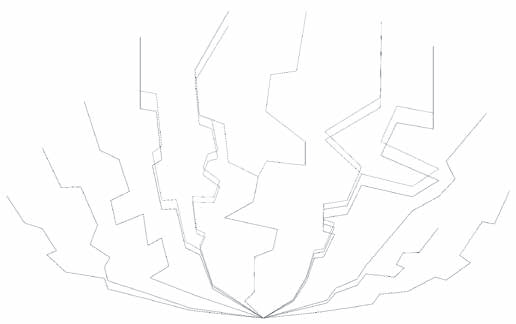
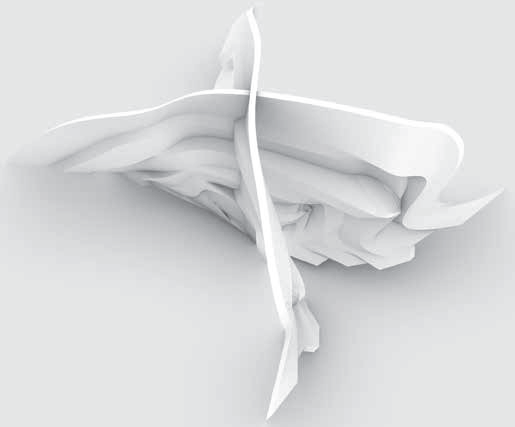

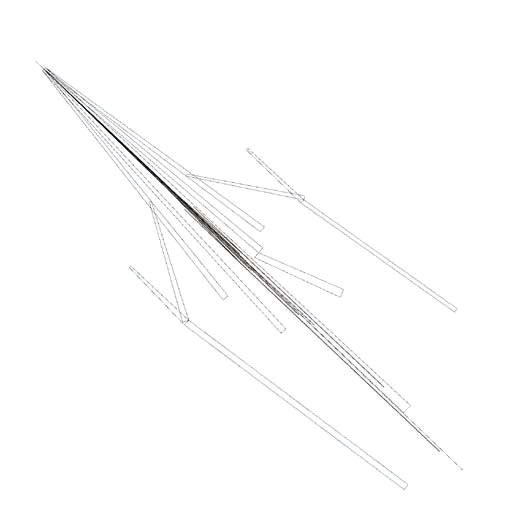
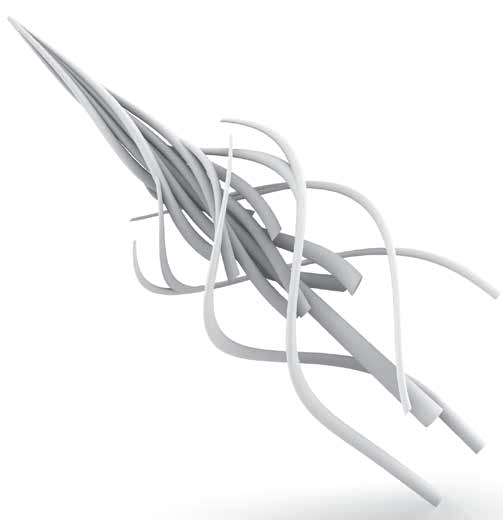
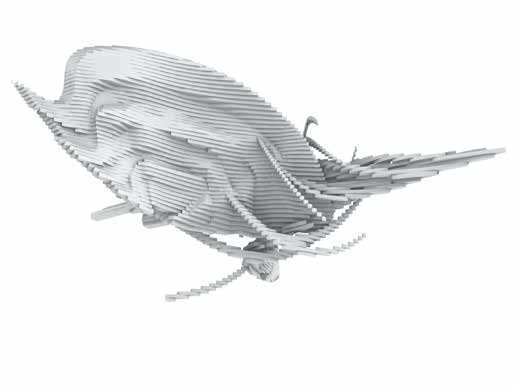
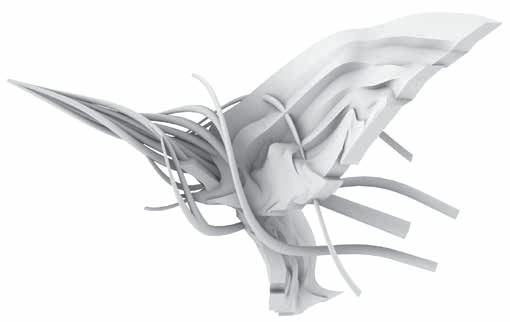
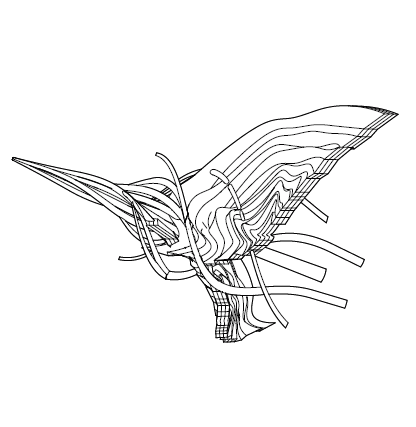
"비(飛)확인 물체..포착!", ⓒDongjin Kim, 19, ⓒJin Kim, 20, Digital
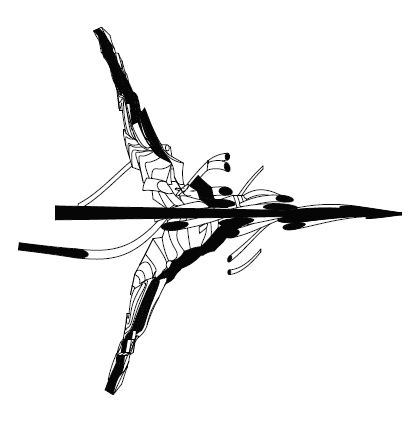

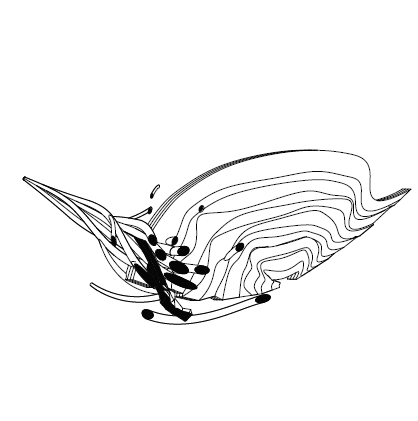
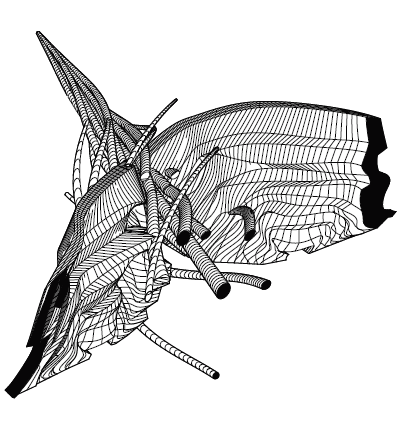
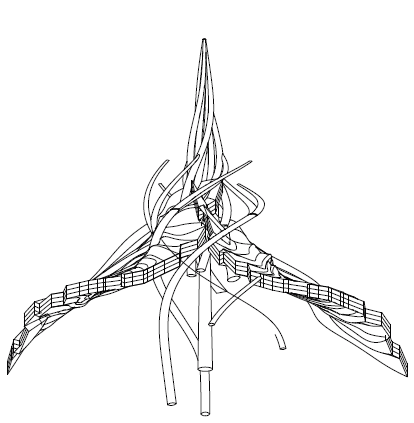
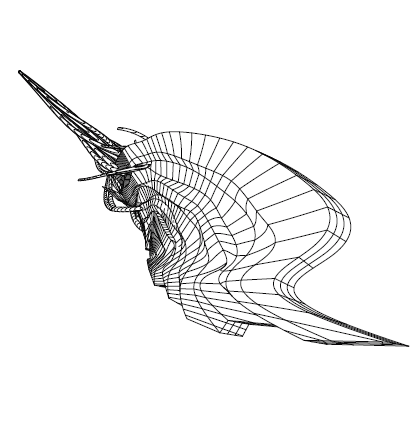
"비(飛)확인 물체..포착!", ⓒDongjin Kim, 19, ⓒJin Kim, 20, Digital
"비(飛)확인 물체..포착!"
Primary gesture (design language)
Spear-nose thrust with swept “wings” and a ribboned wake riding a calm datum.
Starting source (#1 & #4)
- #1 — Floating citadel over a spherical core: stacked terraces over a bulb read as a heavy crown above a calm, rounded base.
- #4 — Jet with contrails: a forward vector with a sharp nose and paired exhaust streaks suggests a spear axis plus trailing lanes.
Reflection (3–5 lines)
- We varied rib count, spacing, and local rotations while keeping the spear axis and crown-over-bulb silhouette legible.
- The oblique view preserves the thrust and wake best; edge thickening clarifies primary vs. secondary ribbons.
- A digital-tectonic pass (laminated slices + tubular spars) increases rhythm without losing the spear read.

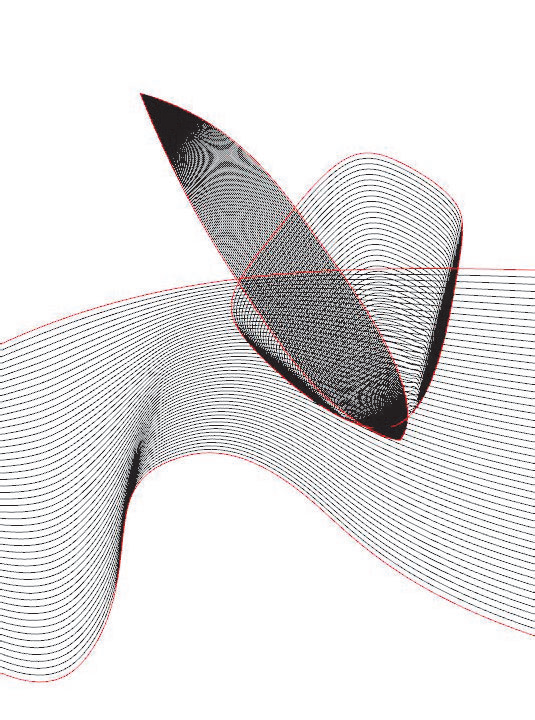
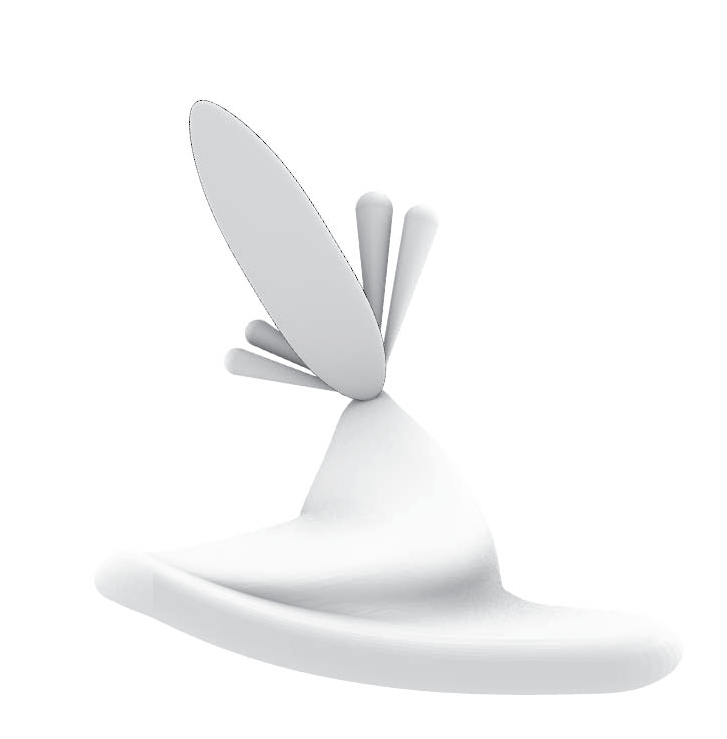
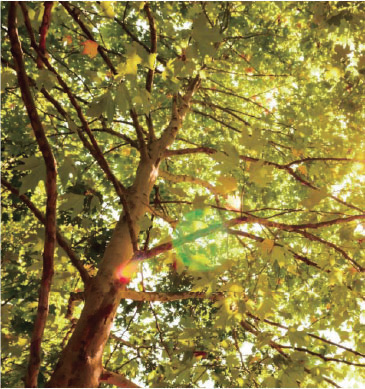
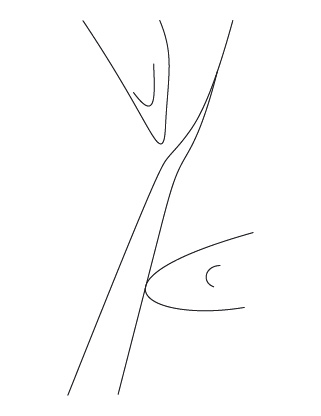
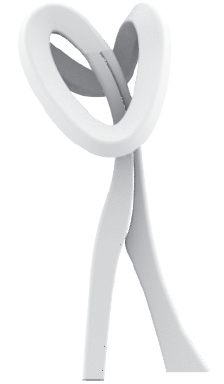
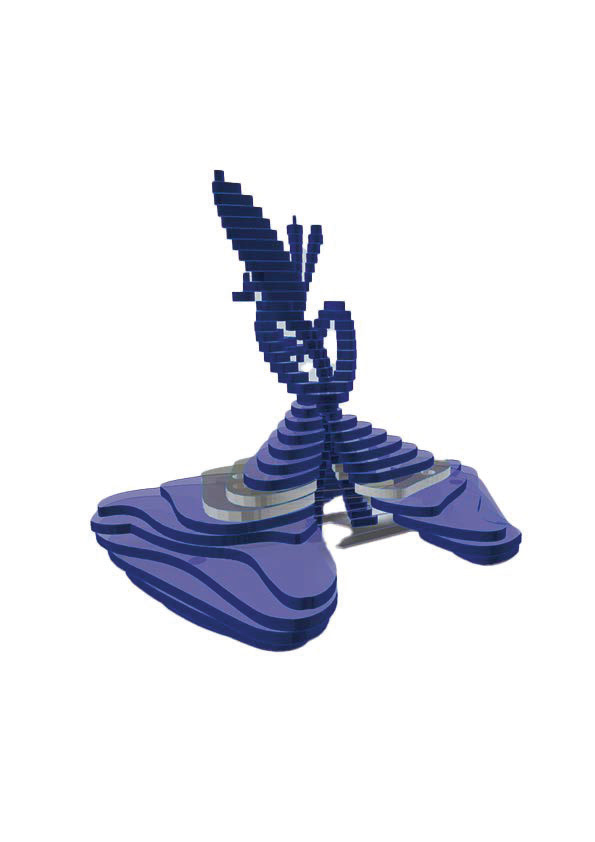

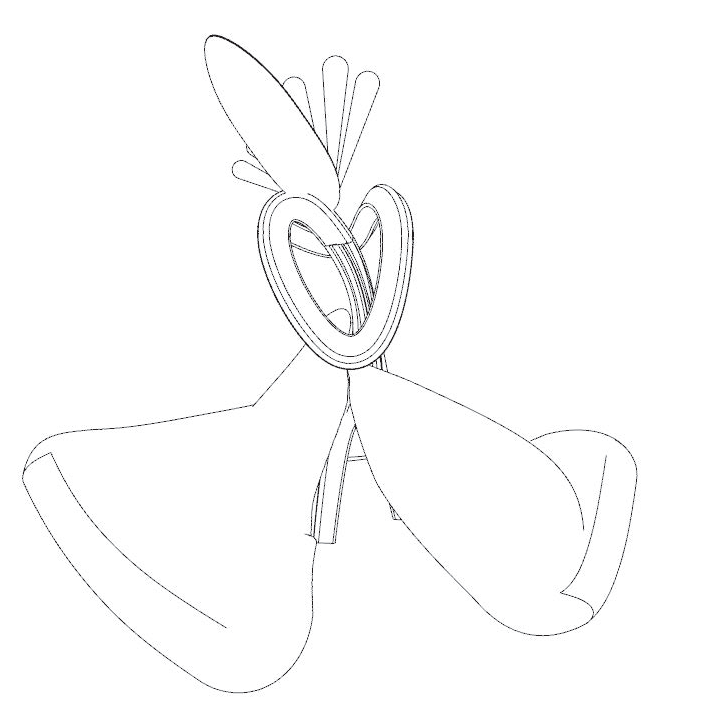
"역설[逆說] : 어떤 주의나 주장에 반대되는 이론이나 말", ⓒHyeyoon Kim, 22, ⓒSeohyun Lee, 22, Digital
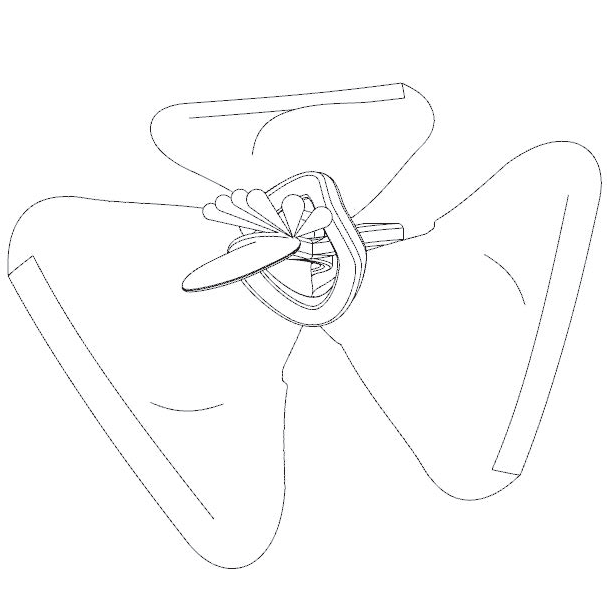
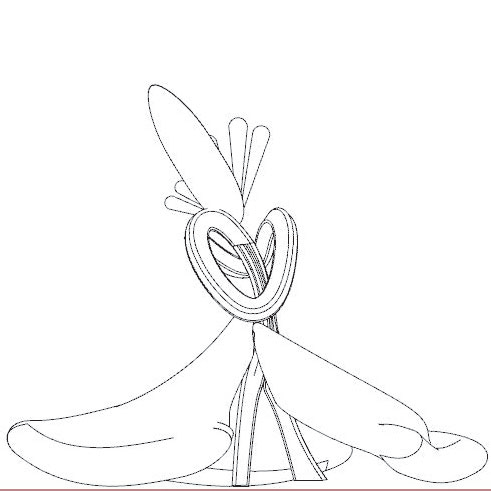


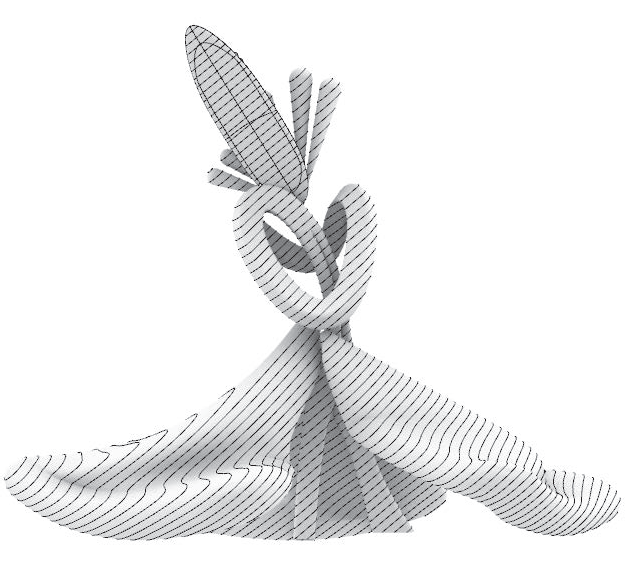
"역설[逆說] : 어떤 주의나 주장에 반대되는 이론이나 말", ⓒHyeyoon Kim, 22, ⓒSeohyun Lee, 22, Digital
"역설[逆說] : 어떤 주의나 주장에 반대되는 이론이나 말"
Primary gesture (design language)
Tilted crest with an upright fin, anchored by a ring hub; skirted drape radiates from the center.
Starting source (#1 & #4)
- #1 — Surfer carving the lip: a diagonal thrust crossing a soft wave crest → fin + sheet reading with spray-like offsets.
- #4 — Backlit tree canopy: branching rays toward a bright core → ring hub with petal occlusions and radiating axes.
Reflection (3–5 lines)
- Copy/rotate/scale around the hub maintained the “fin + skirt” silhouette; we only changed petal counts and spacing.
- Front elevation communicates the ring hub most clearly; side views emphasize the tilted-crest axis.
- Overprint lineweights mark the hub as heavy; digital-tectonic ribs reveal hinge lines and clearances.
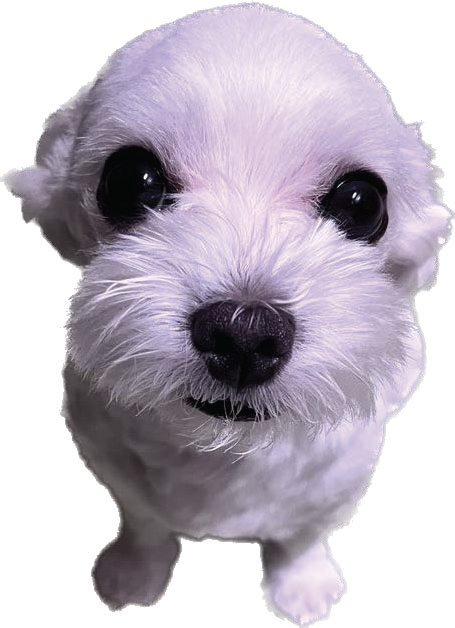
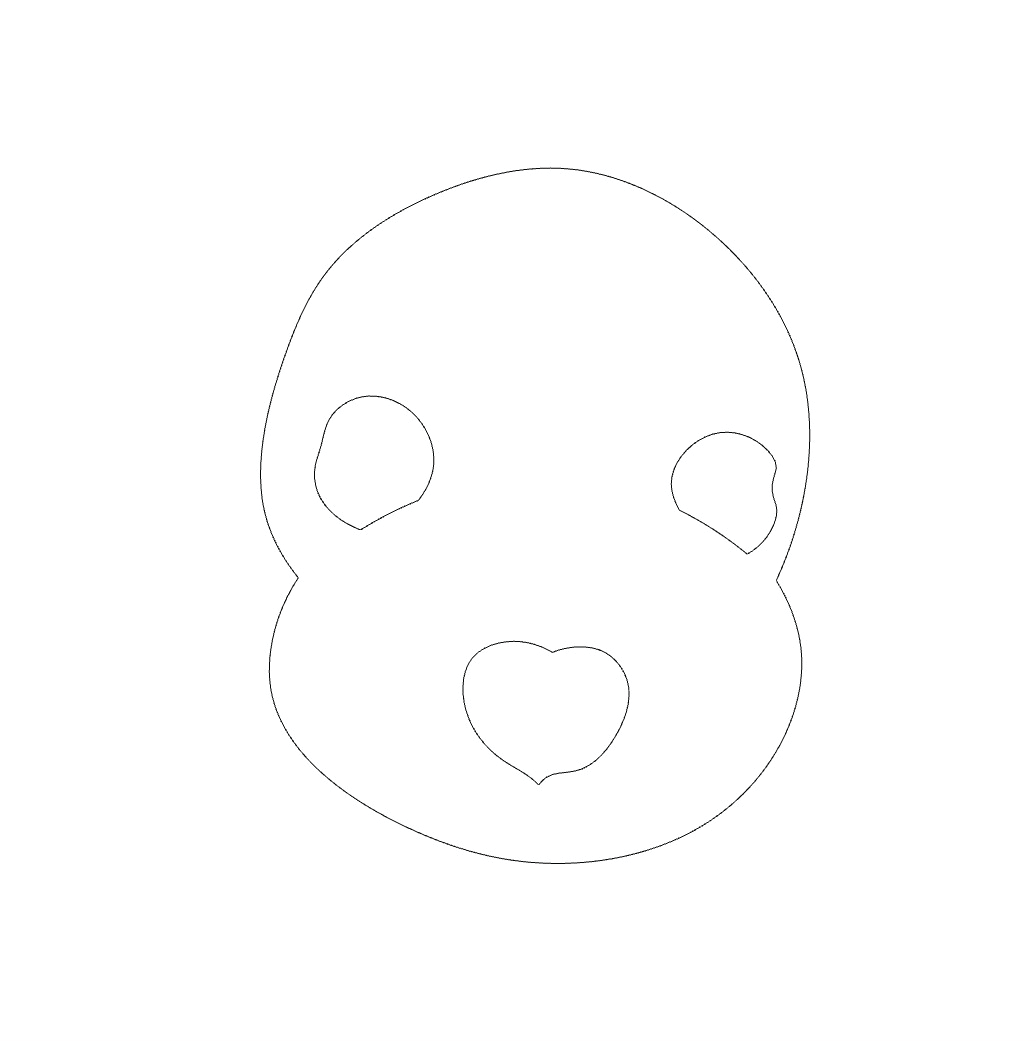
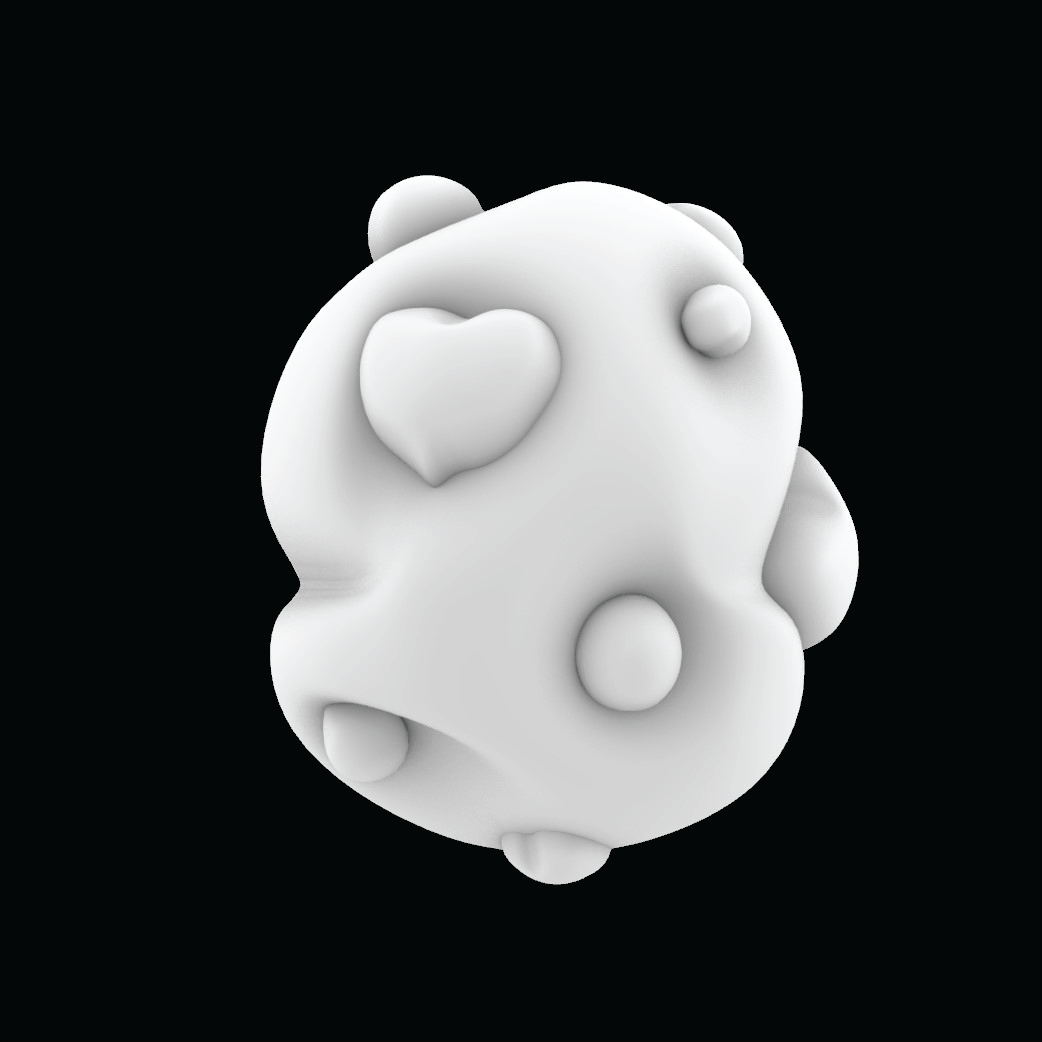
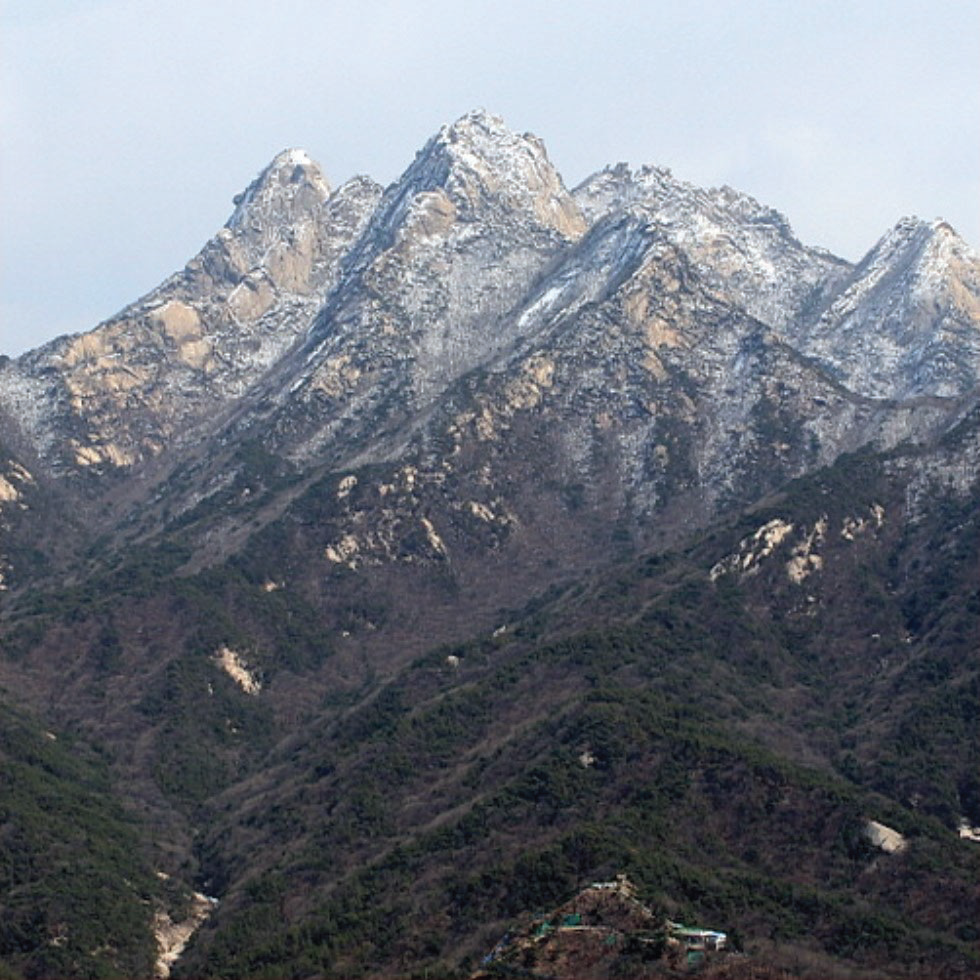
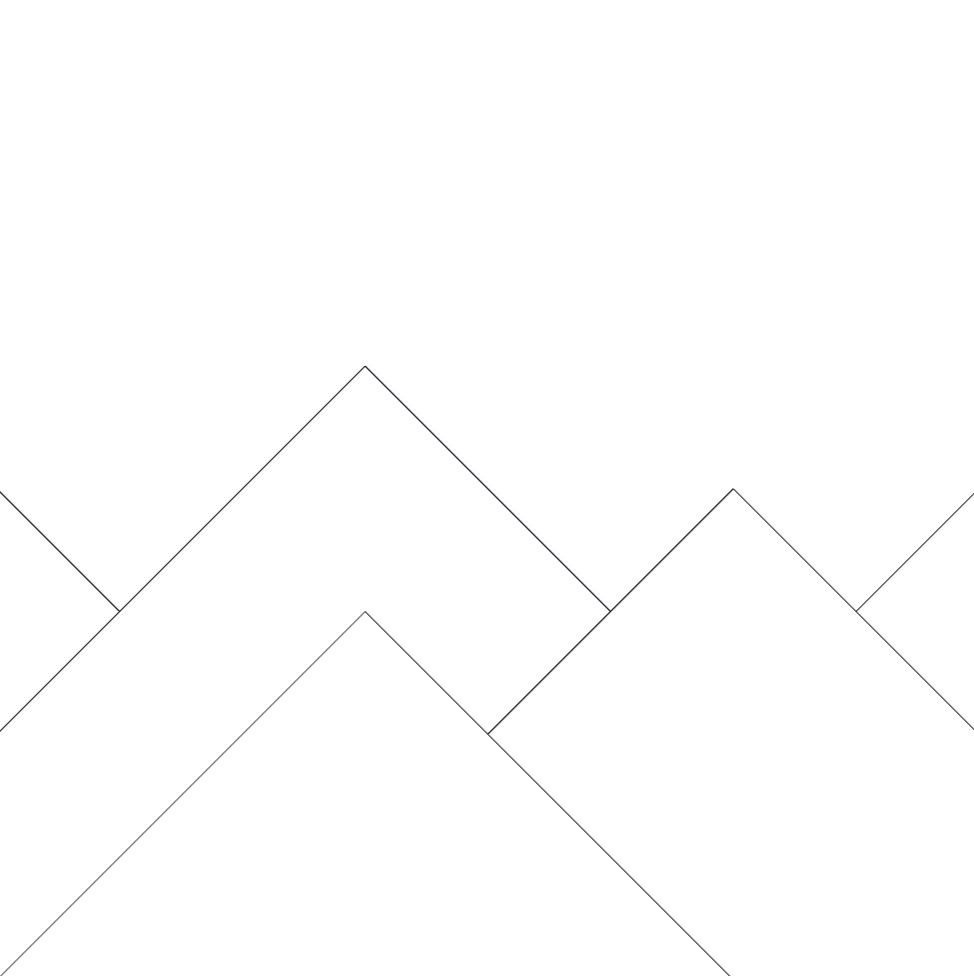
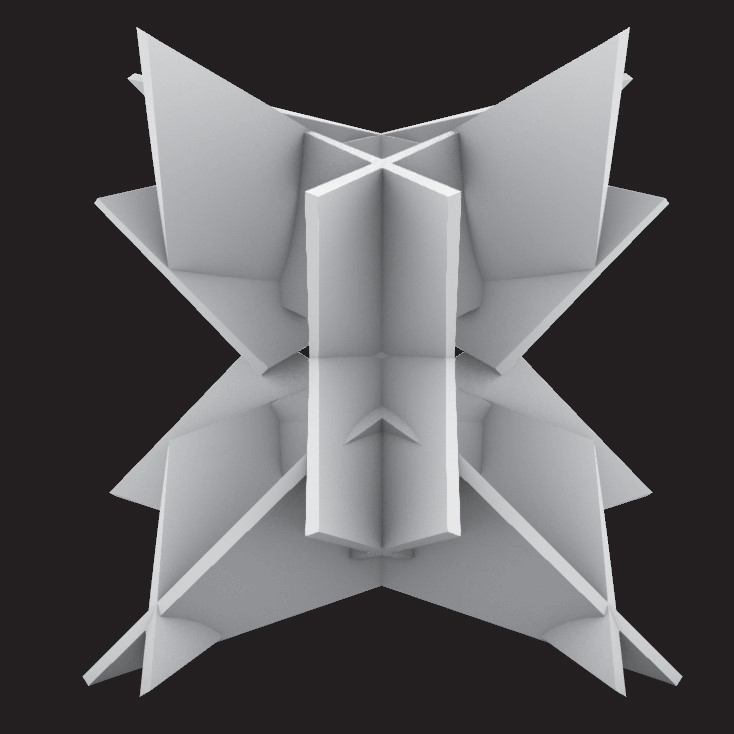
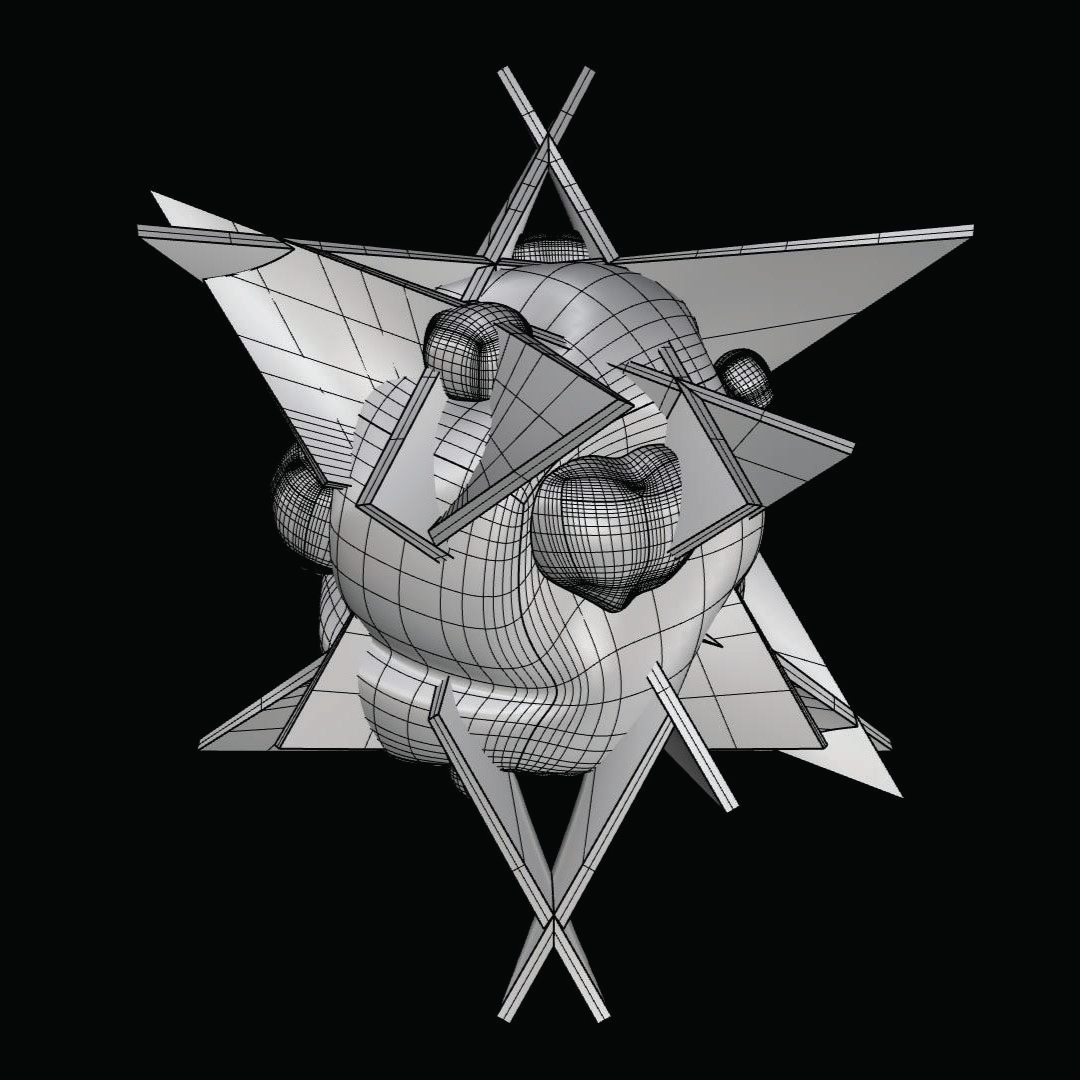
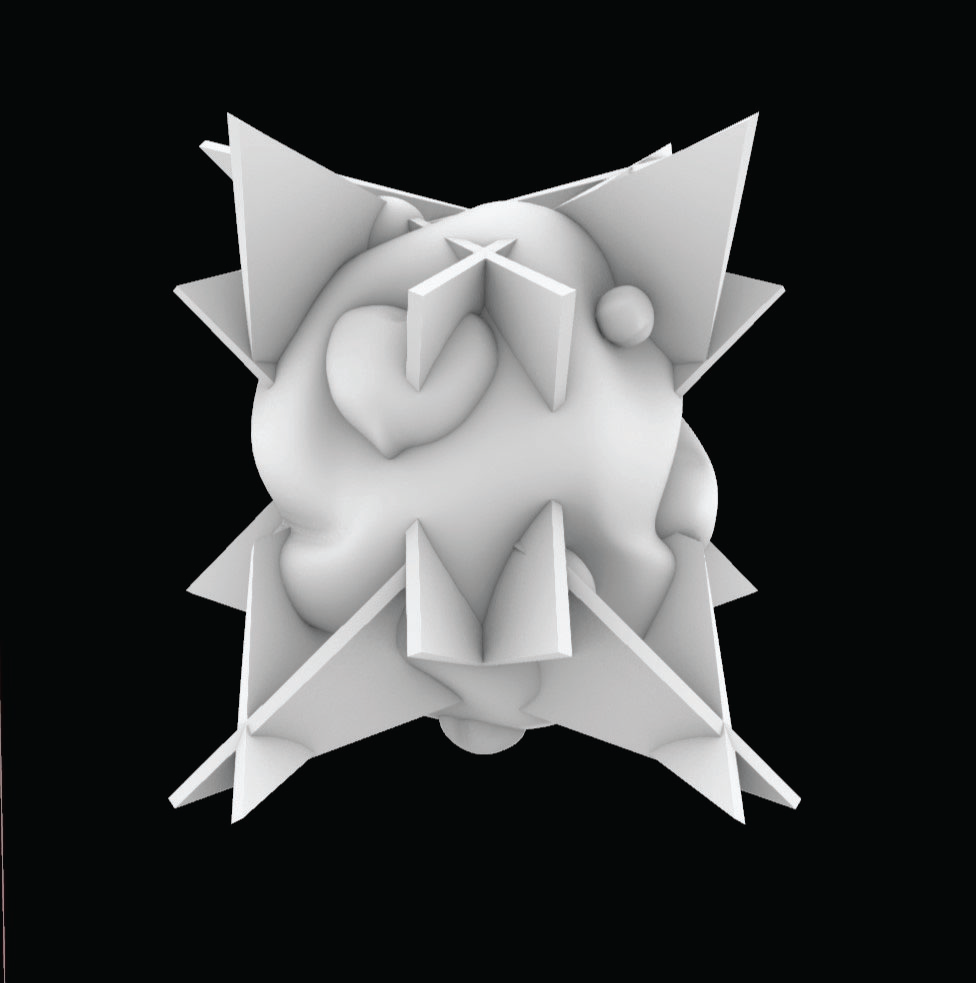
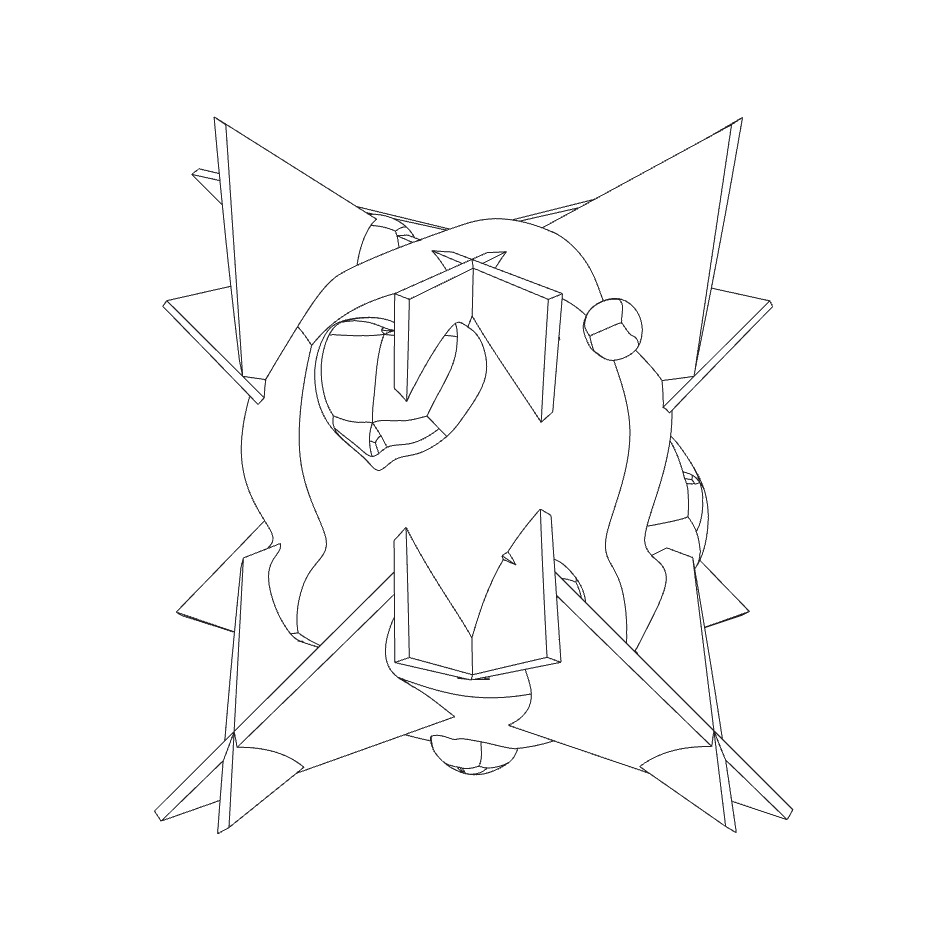
"조화-김자몽, Mountain", ⓒDayoung Baek, 19, ⓒYeongbum Kim, 17, Digital
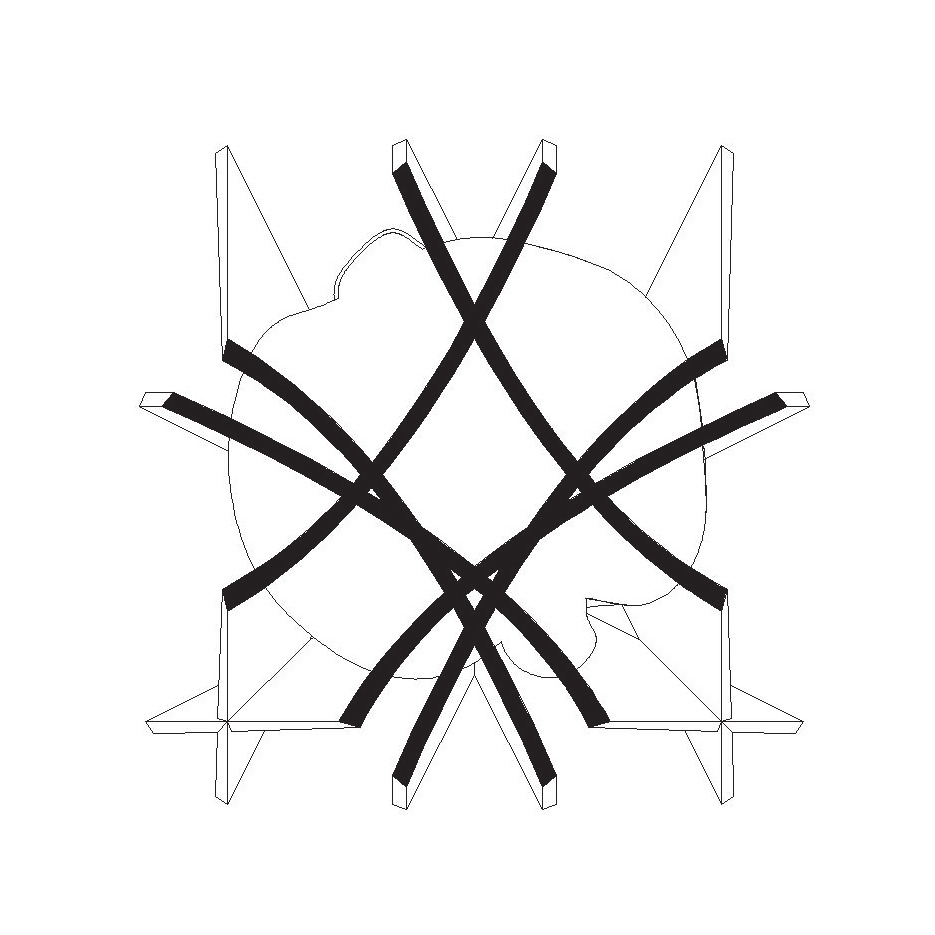

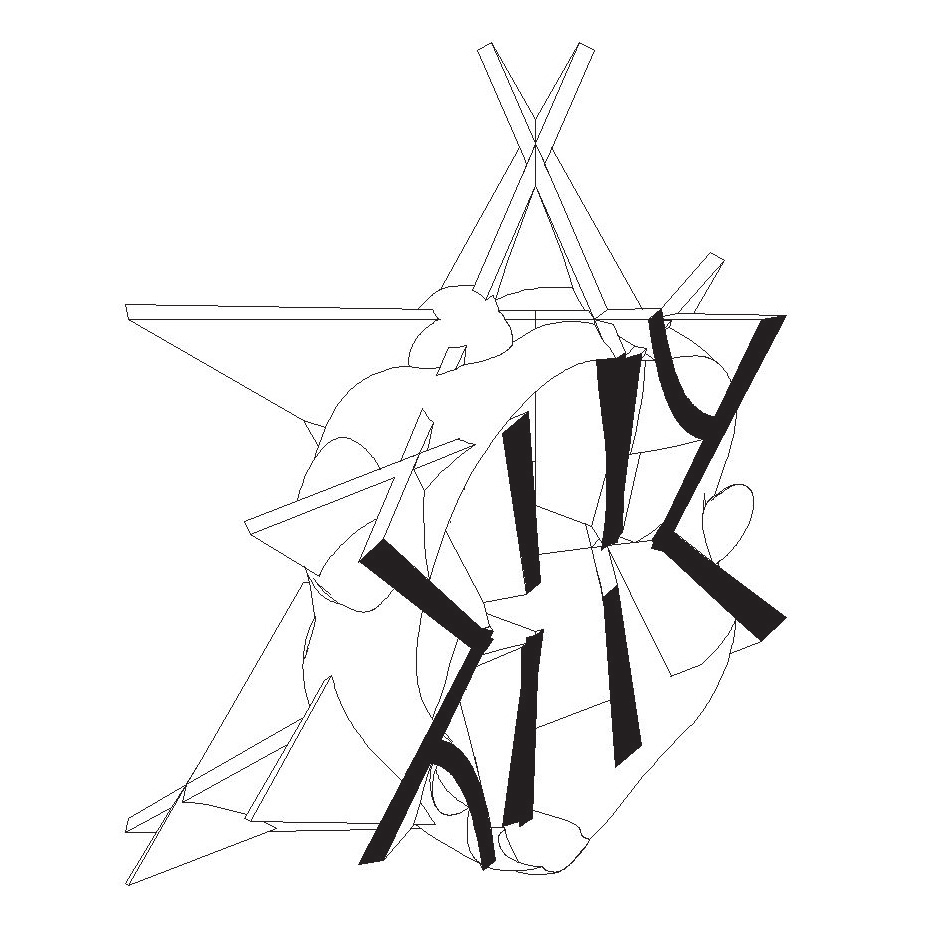
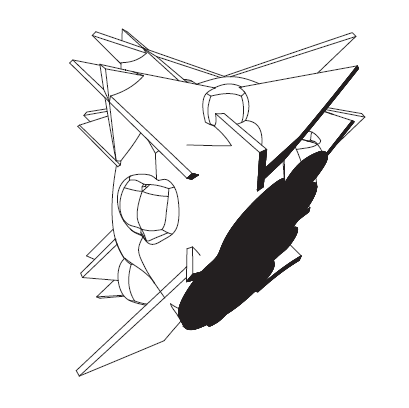

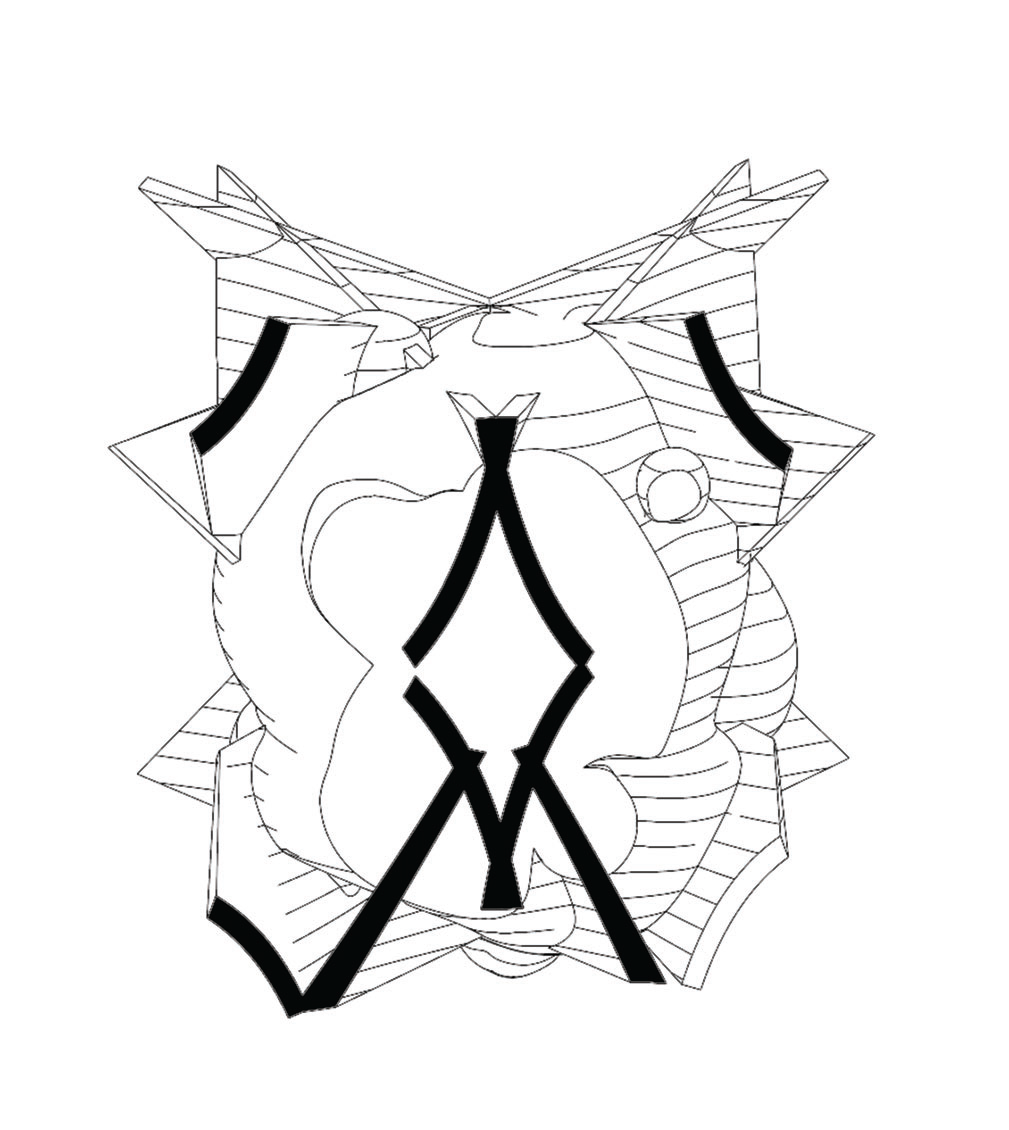
"조화-김자몽, Mountain", ⓒDayoung Baek, 19, ⓒYeongbum Kim, 17, Digital
"조화-김자몽, Mountain"
Primary gesture (design language)
Bulbous core with radial peaks; facial cavities become indexed voids on a spiked “mountain-star.”
Starting source (#1 & #4)
- #1 — Puppy portrait (frontal): round skull + eye/nose pits → spherical core with three primary cavities.
- #4 — Mountain ridge set: serrated skyline → radial peaks and notch cuts around the core.
Reflection (3–5 lines)
- We varied spike count and cavity size while keeping the round core + tri-cavity face legible.
- Axonometric best preserves both “face voids” and the spiked ridge; plan emphasizes the star symmetry.
- Digital-tectonic lamination (slice fields) adds banding that reads as geologic strata over the core.
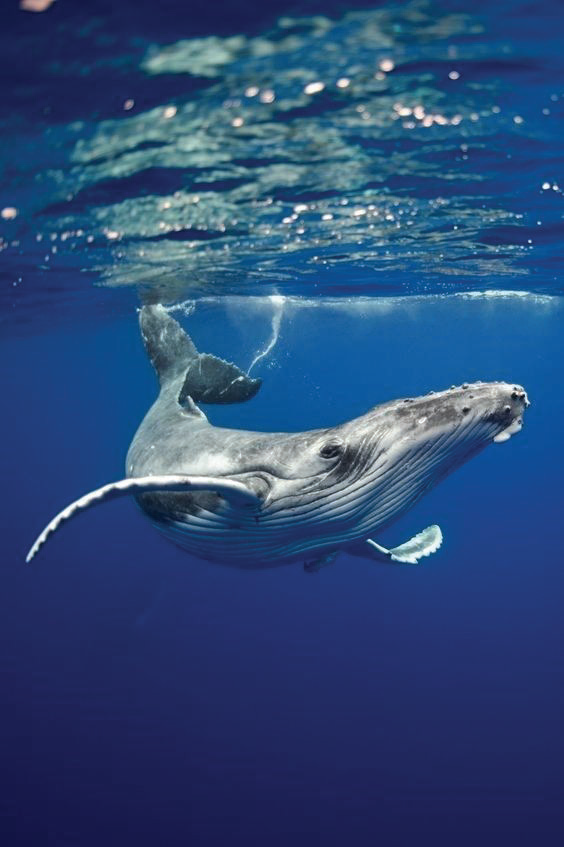
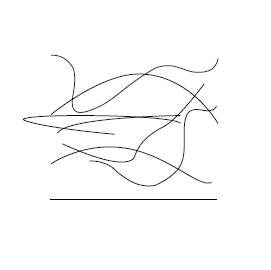
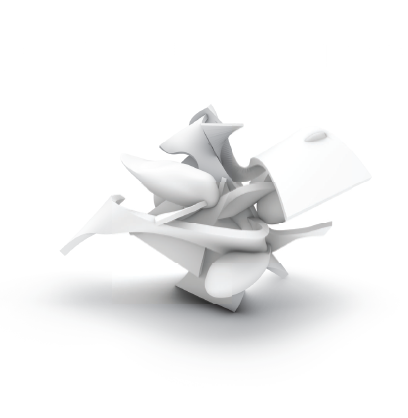

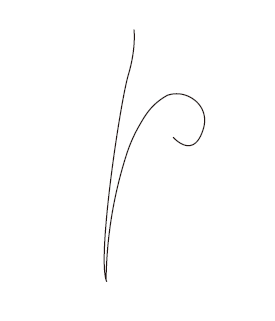
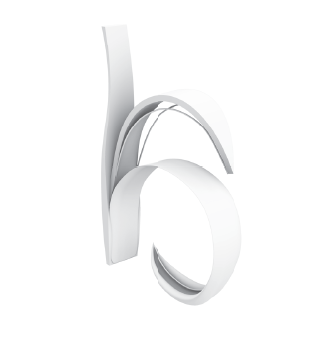
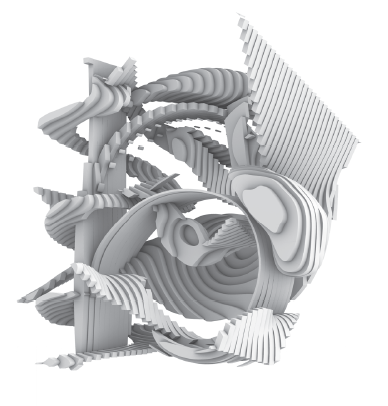
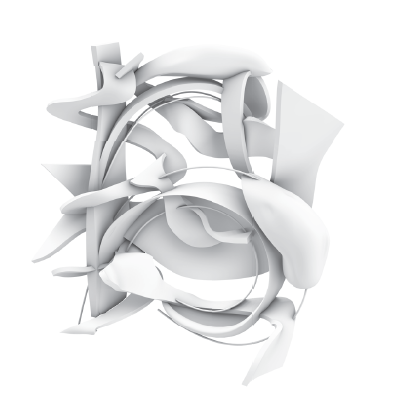
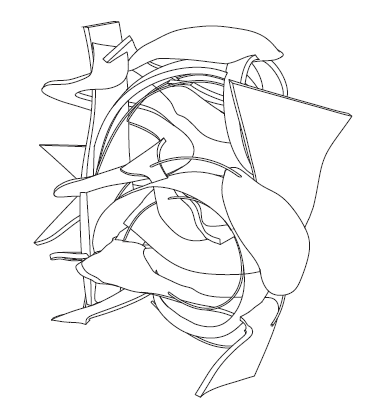
"흐름 속의 방향성과 자유로움", ⓒGyoonWoo Shim, 22, ⓒYoonseo Choi, 22, Digital
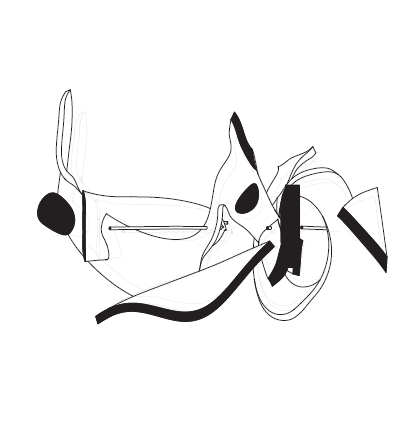
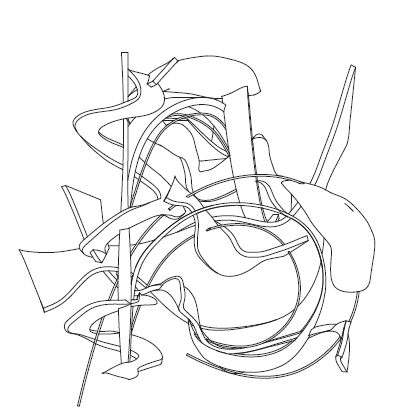

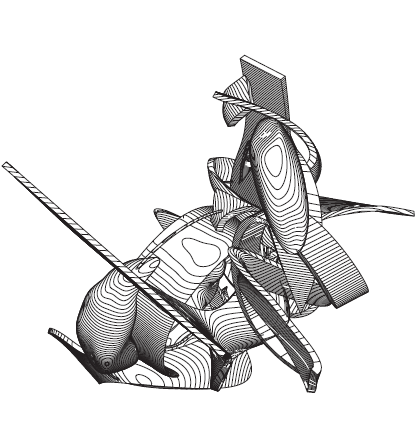
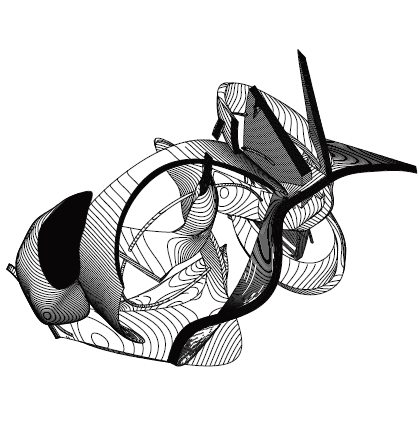
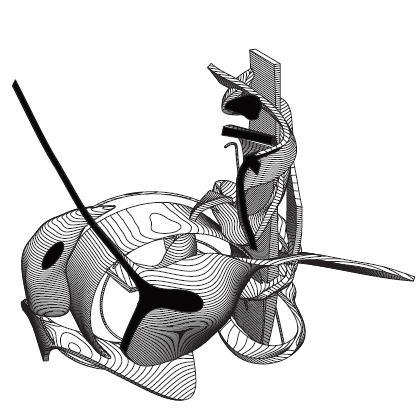
"흐름 속의 방향성과 자유로움", ⓒGyoonWoo Shim, 22, ⓒYoonseo Choi, 22, Digital
"흐름 속의 방향성과 자유로움"
Primary gesture (design language)
Curved spine with pendant pods; flipper-like blades loop along a guiding arc.
Starting source (#1 & #4)
- #1 — Whale near the surface: arched back and flipper sweep → dominant spine with lateral blades.
- #4 — Lily-of-the-valley: drooping bells on a single stalk → pendant pod sequence along a curve.
Reflection (3–5 lines)
- We tuned blade thickness and pod spacing; the main arc and dorsal silhouette stayed constant.
- The quarter view keeps the whale-spine read intact; interior loops show circulation around the stalk.
- Assuming strip-lamination as digital tectonics sharpened hierarchy between spine, pods, and braces.
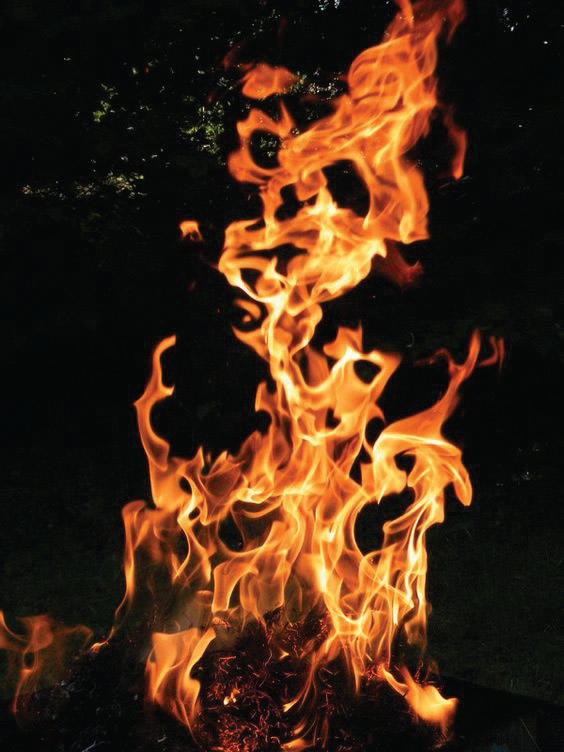
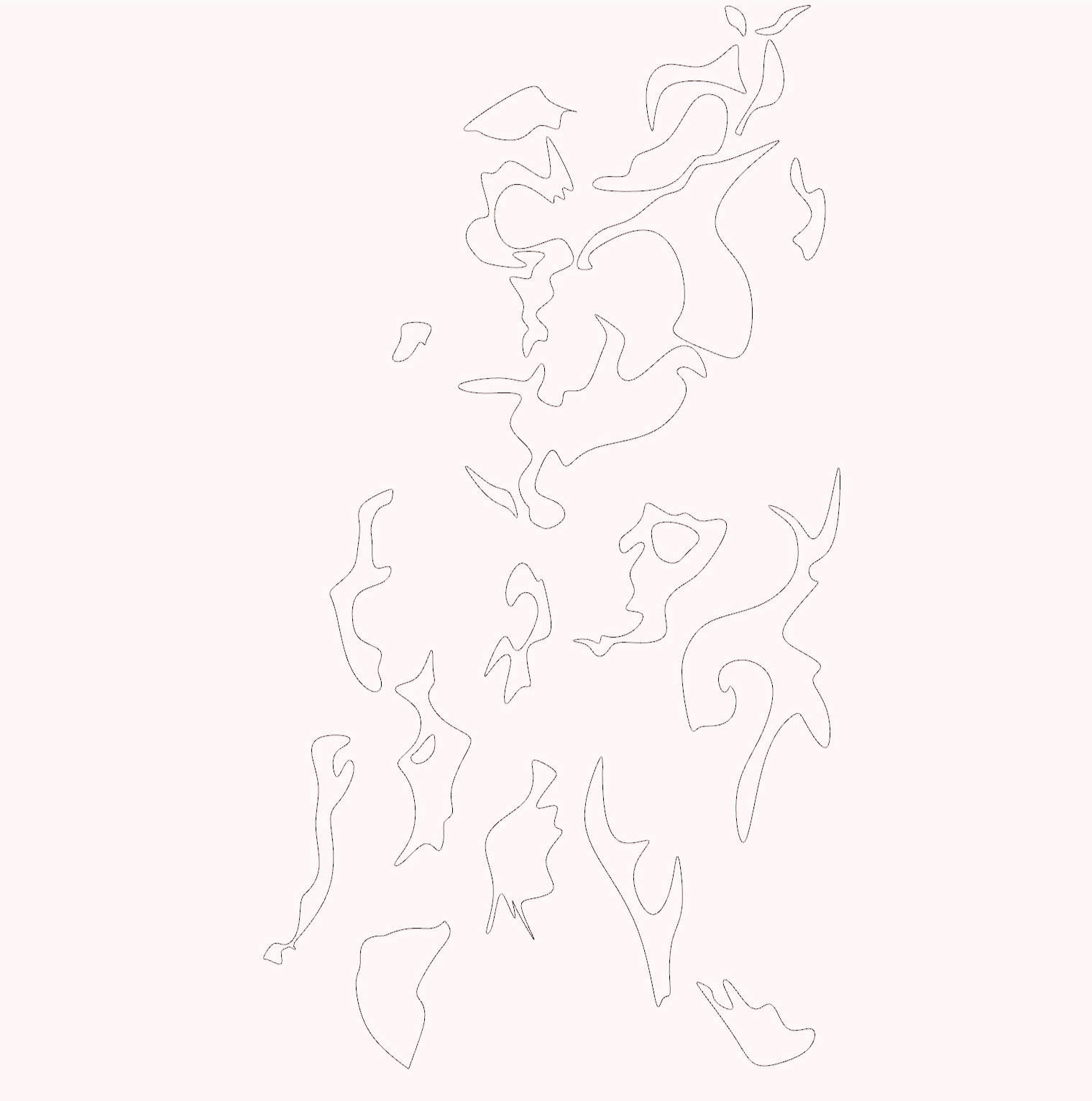

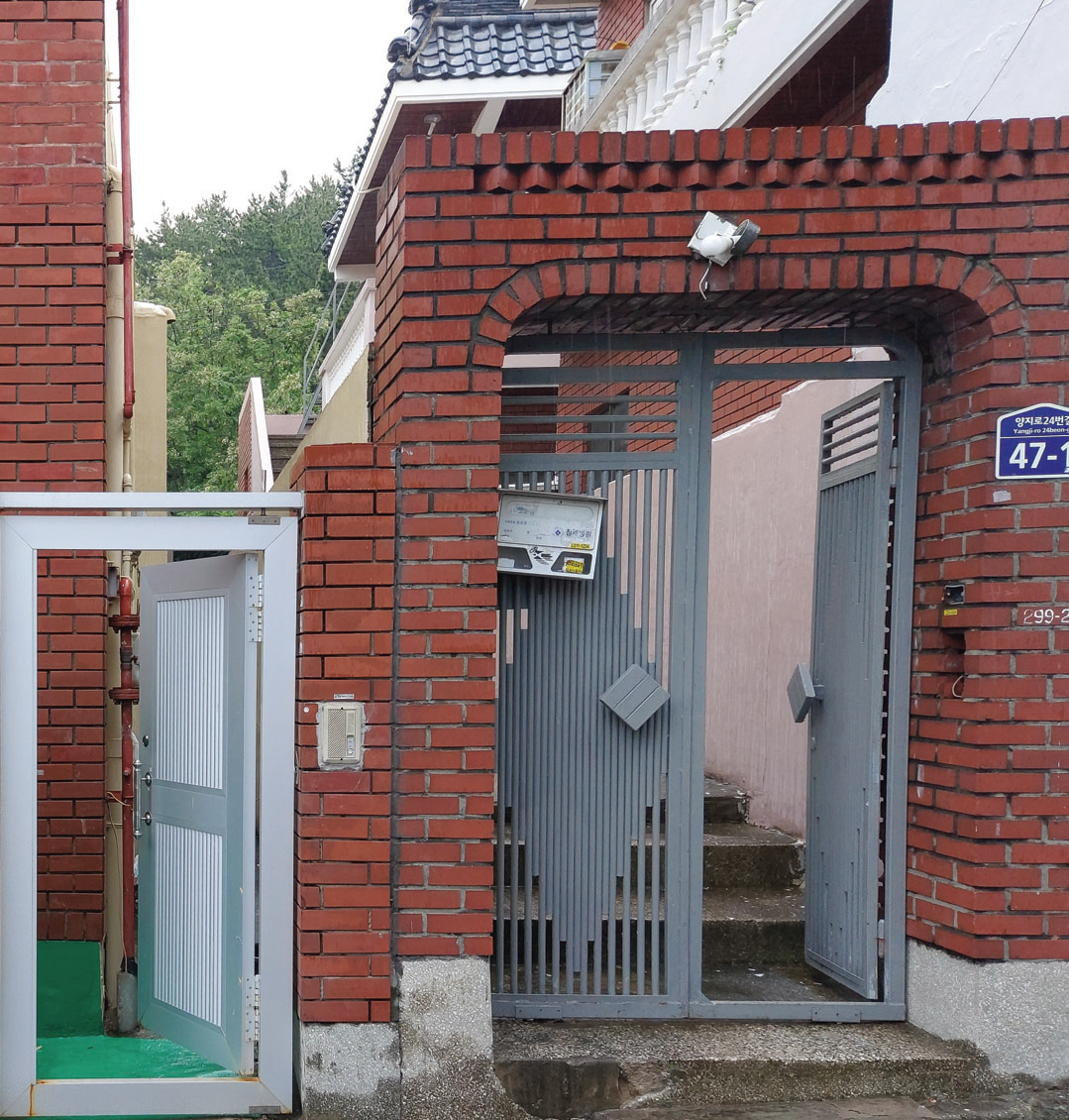
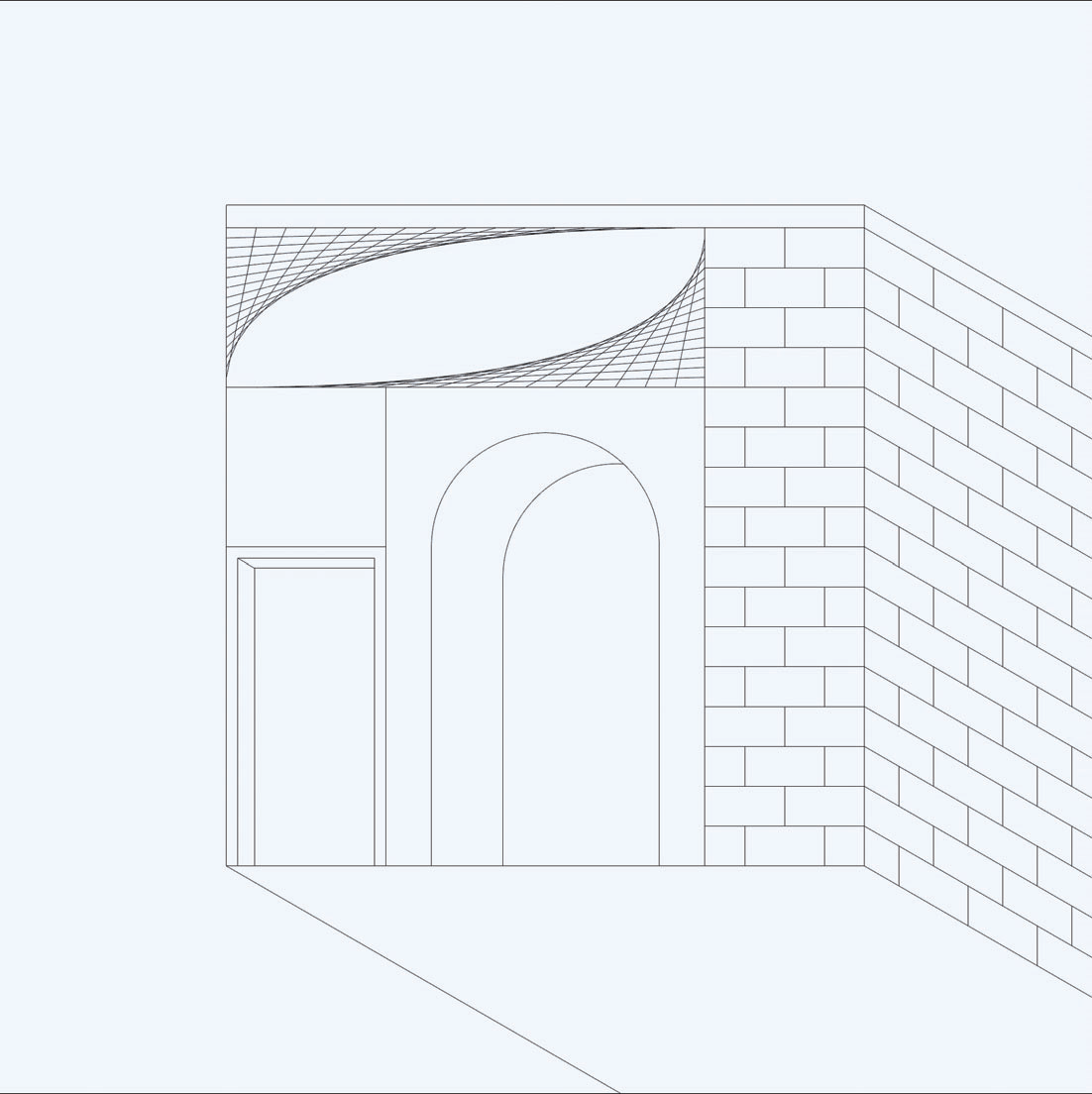

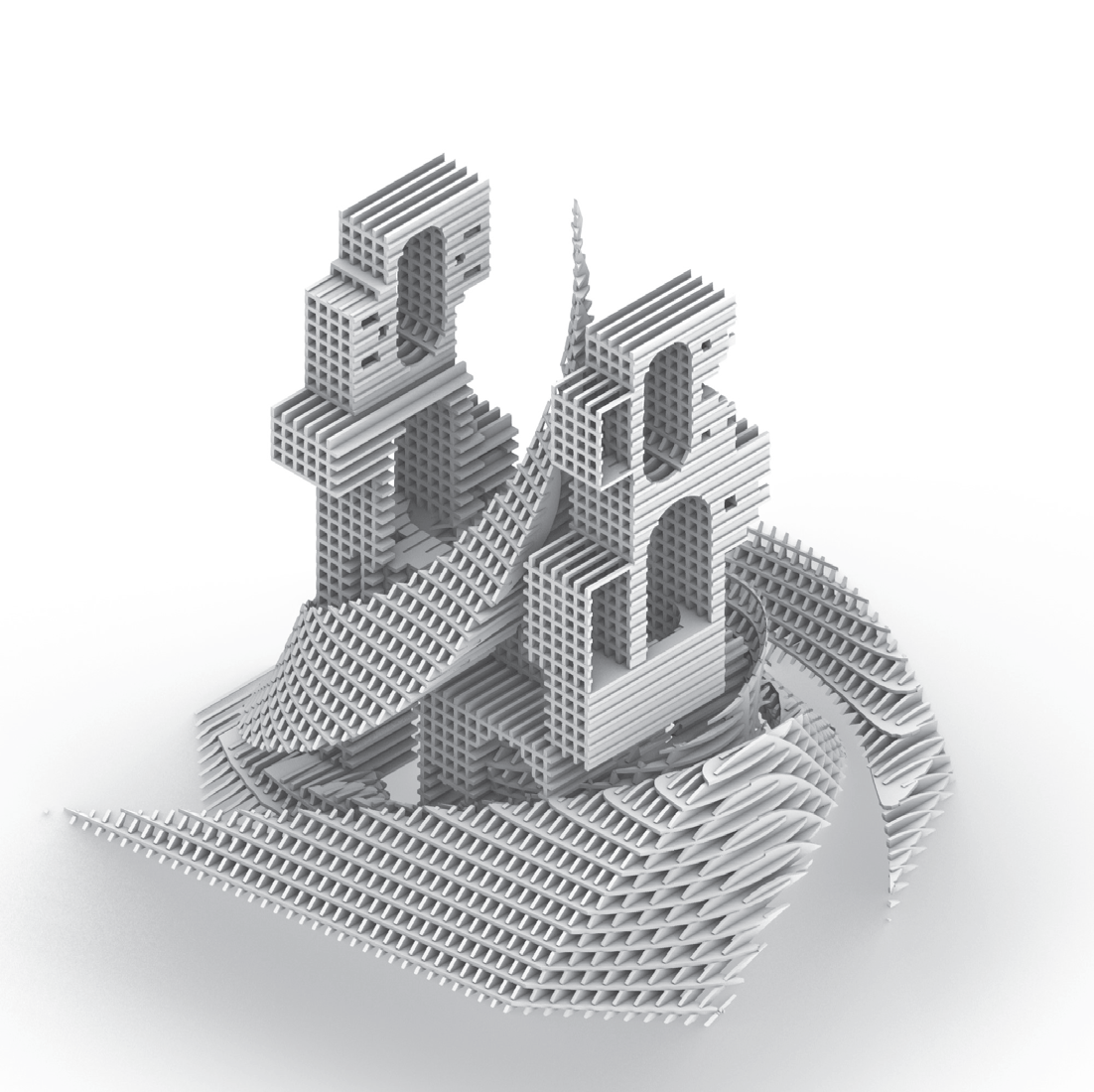
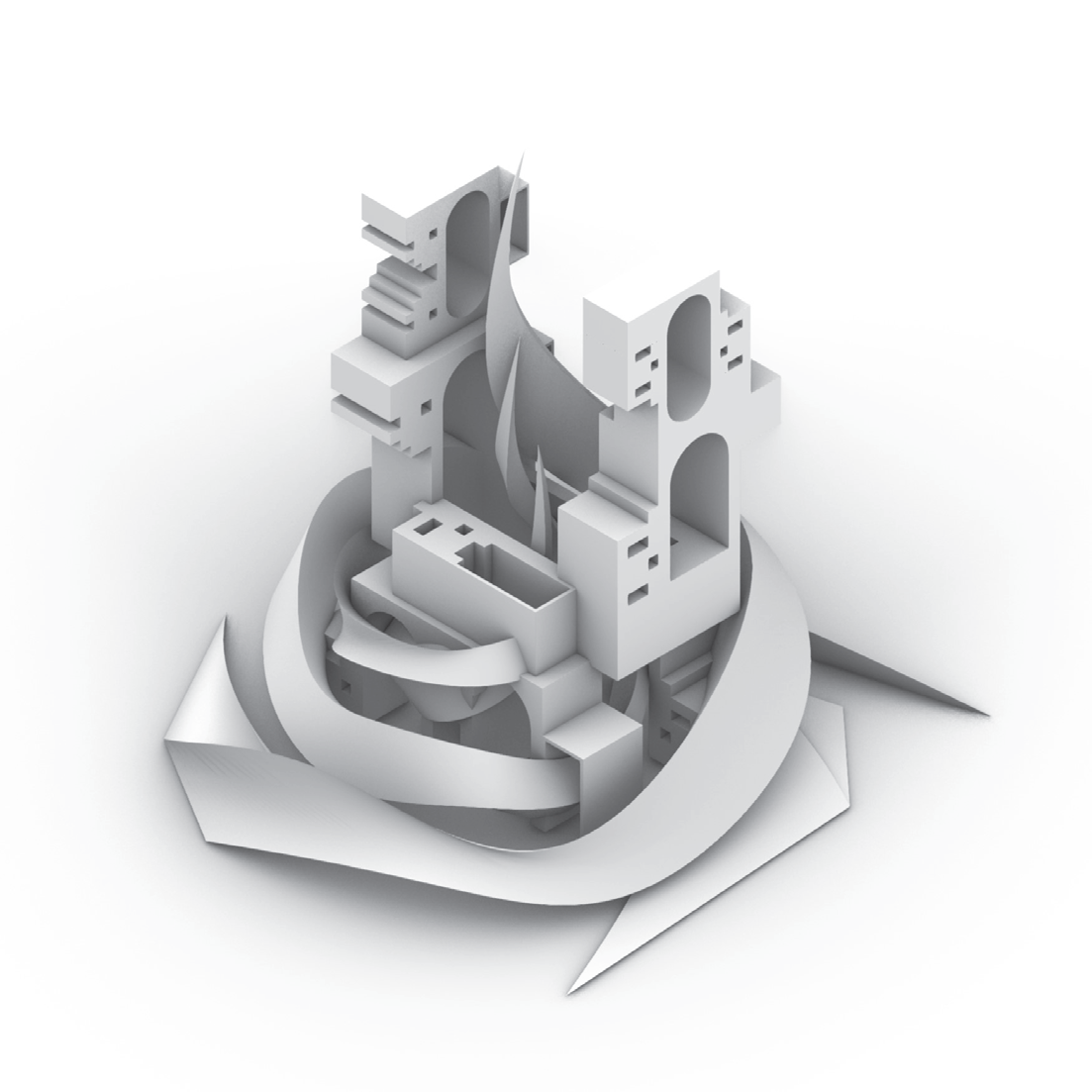

"Zero Balance", ⓒDongjoo Hwang, 20, ⓒGeonik Im, 22, Digital
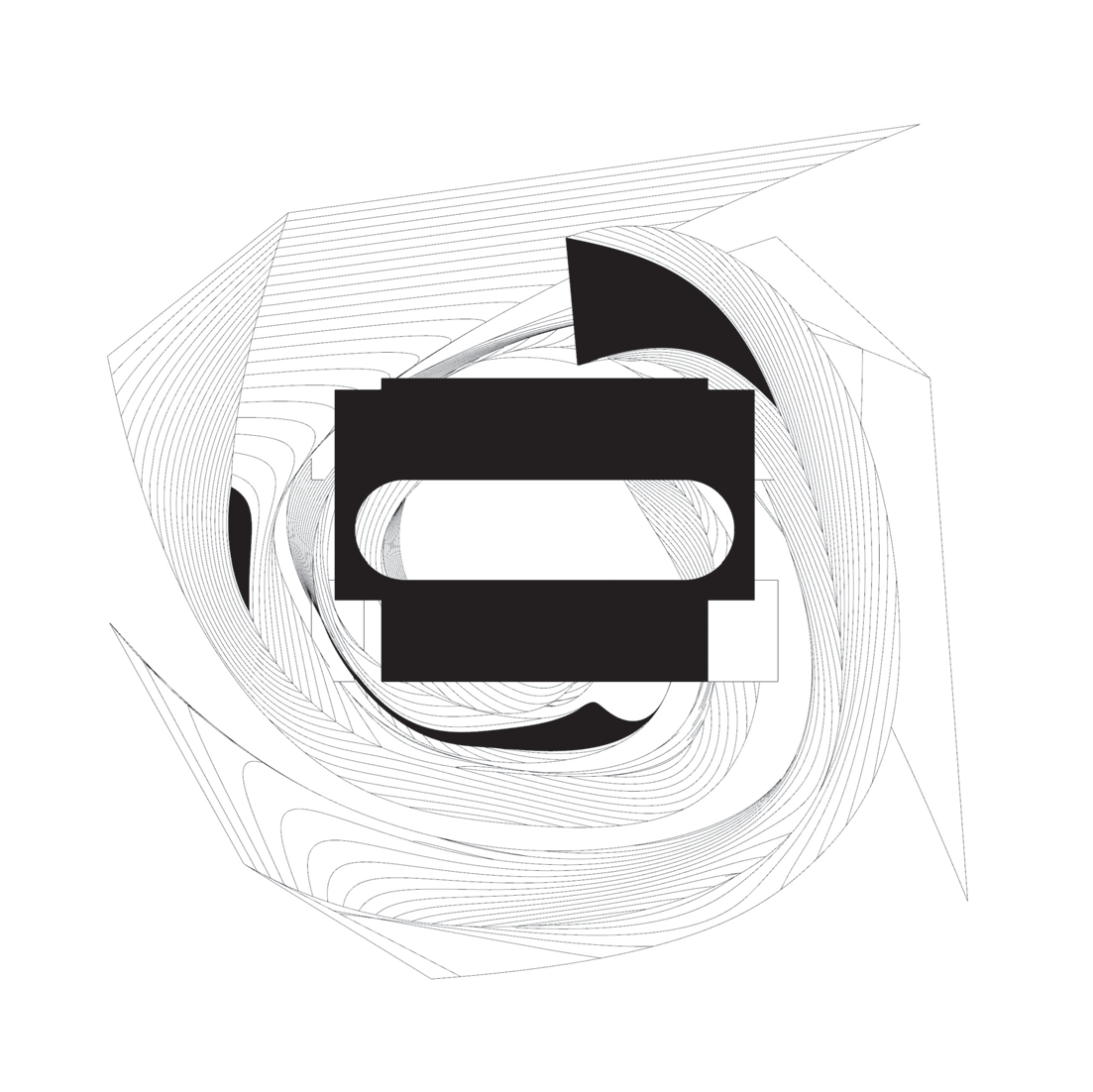
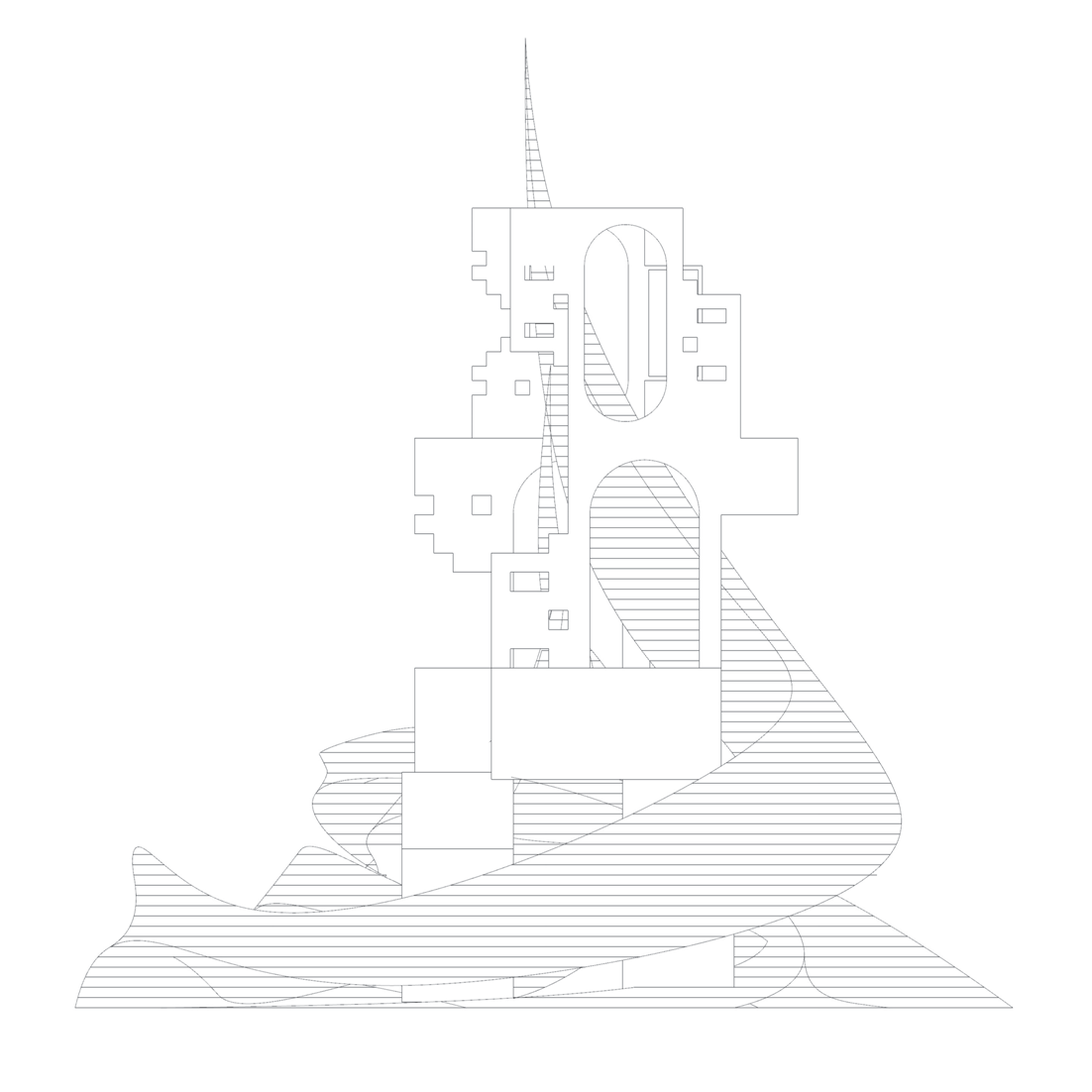
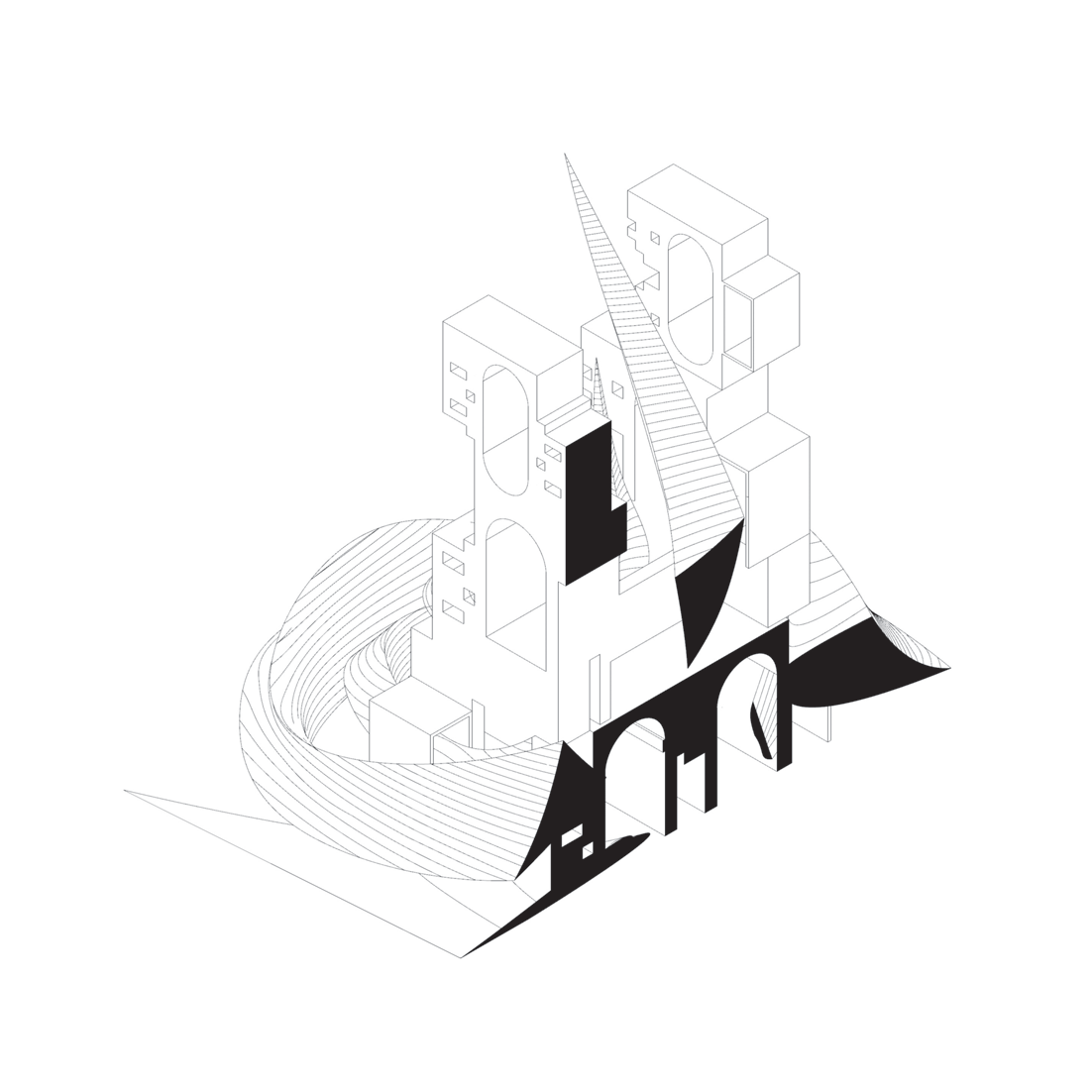
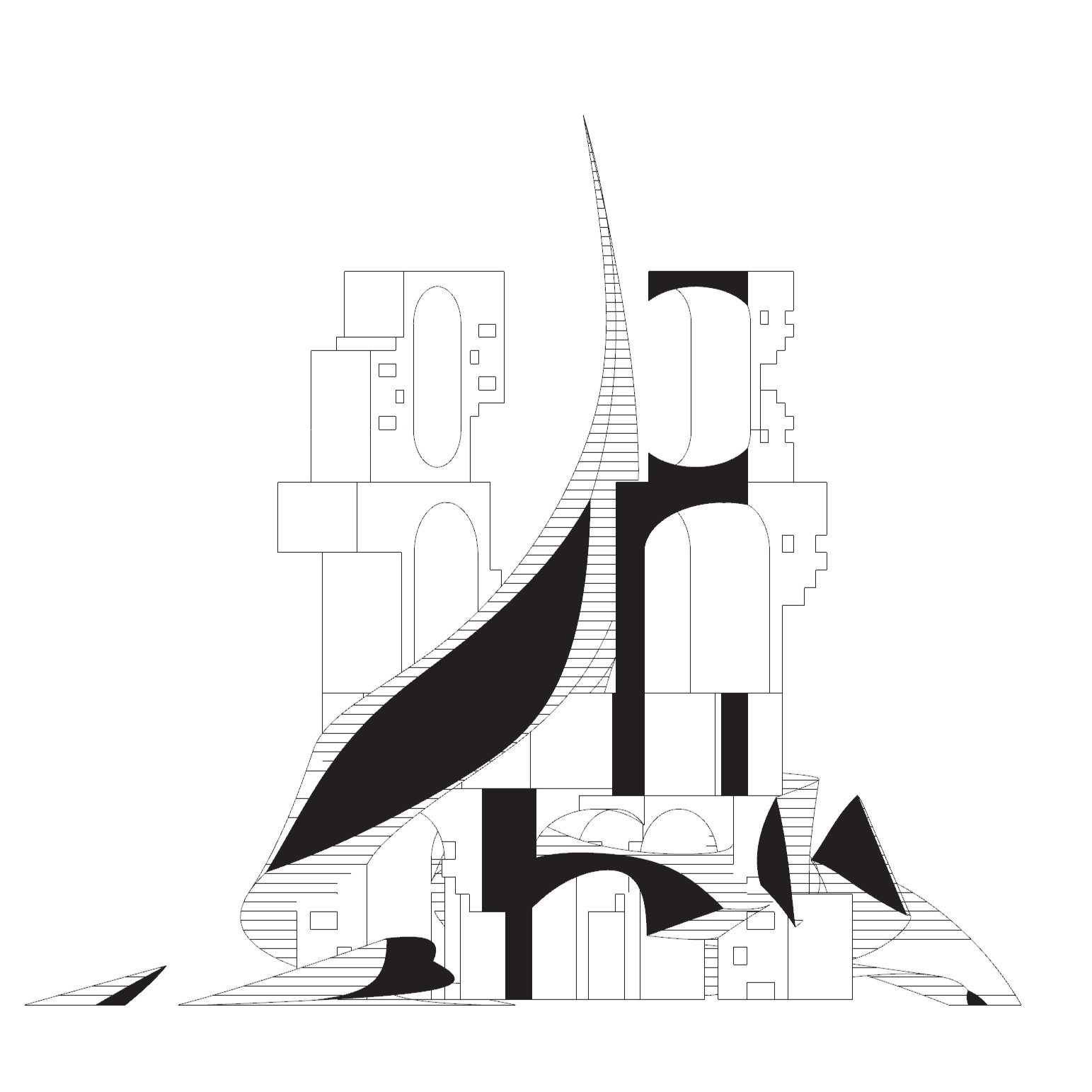
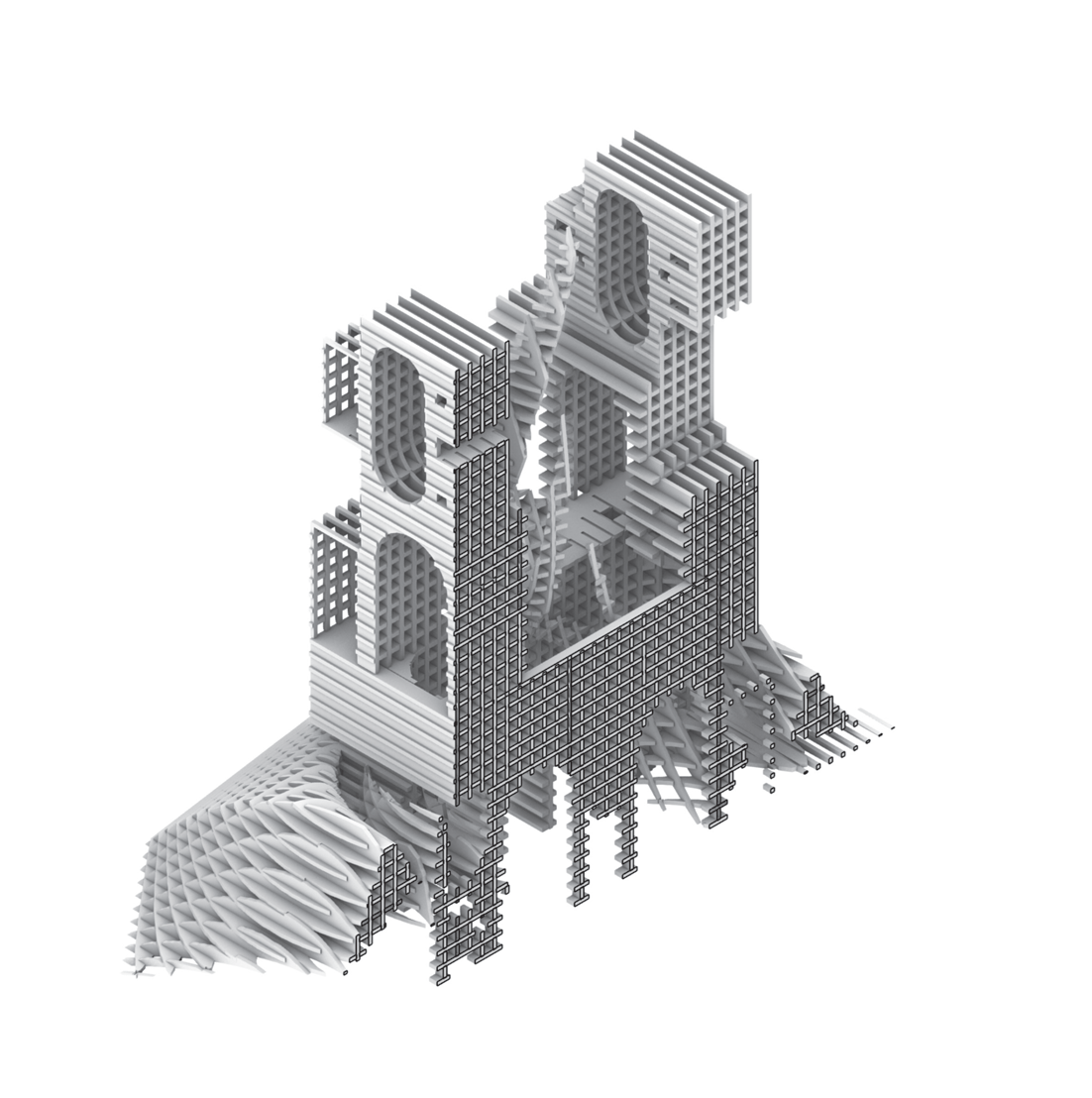
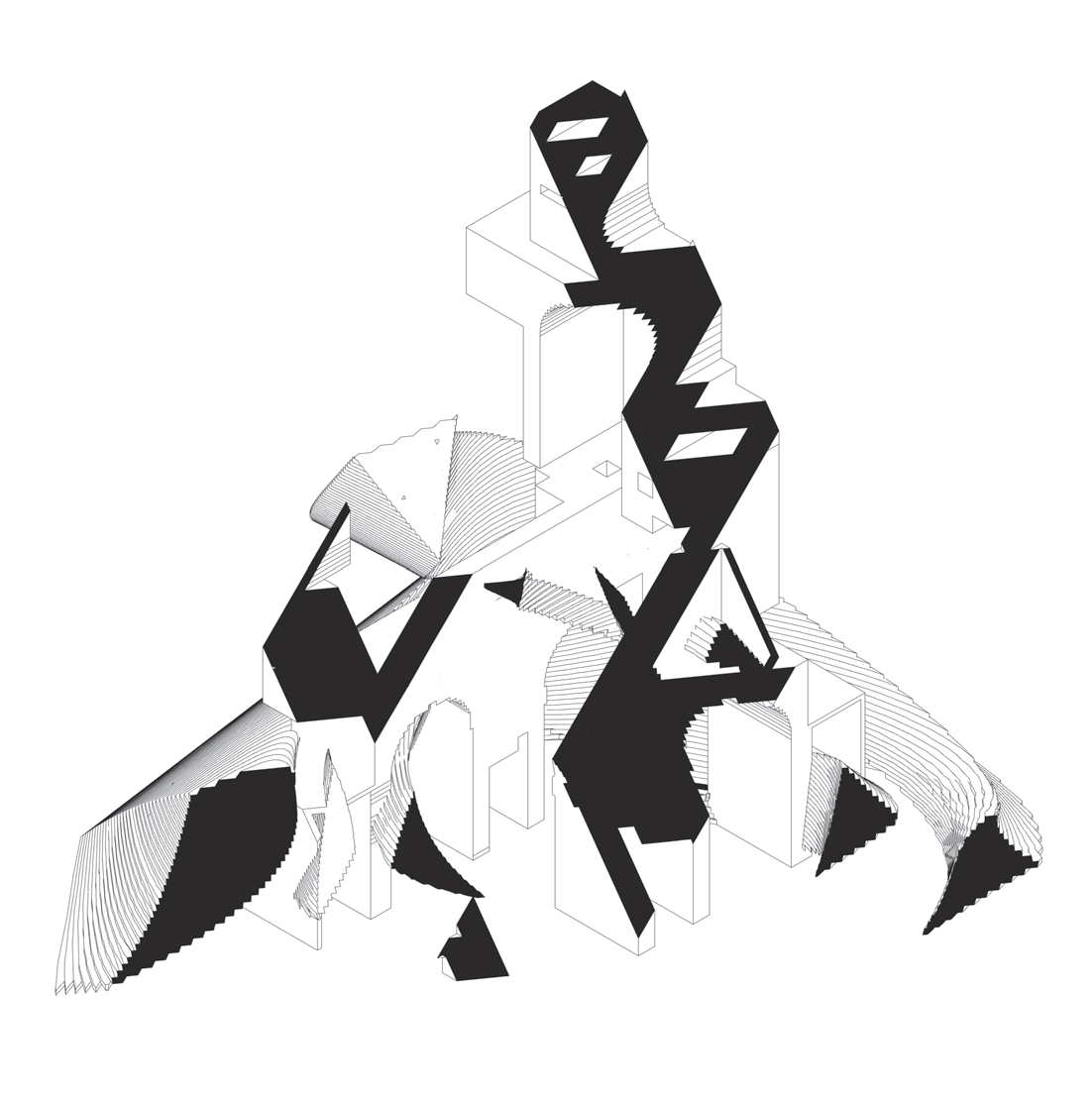
"Zero Balance", ⓒDongjoo Hwang, 20, ⓒGeonik Im, 22, Digital
"Zero Balance"
Primary gesture (design language)
A rising spiral ribbon opposed by a rectilinear gate; equilibrium between swirl and frame.
Starting source (#1 & #4)
- #1 — Flame column: upward swirl with tapering tongues → spiral ribbon with a focused crown.
- #4 — Brick arch/gate: rigid frame + axial opening → orthogonal datum and stepped thresholds.
Reflection (3–5 lines)
- We altered ribbon count and local rotations while fixing the arch datum and spiral axis.
- Plan registers the arch voids; oblique shows the swirl enveloping the blocky masses.
- Digital-tectonic slicing differentiates slab-like gates from thin flame ribbons.

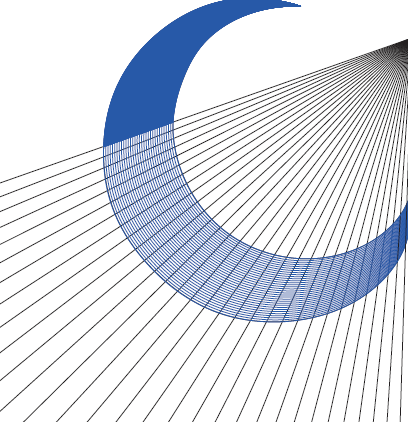
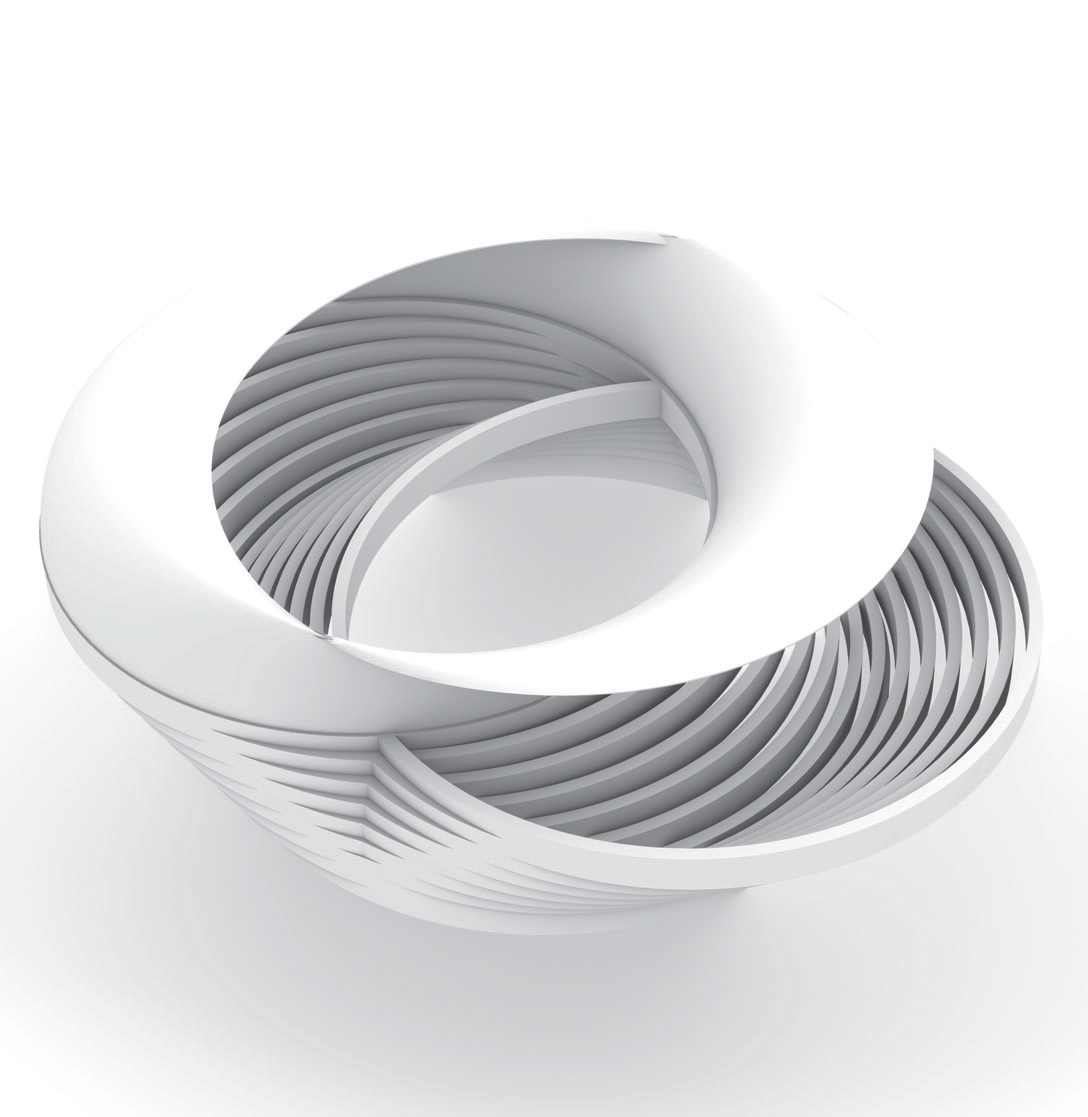
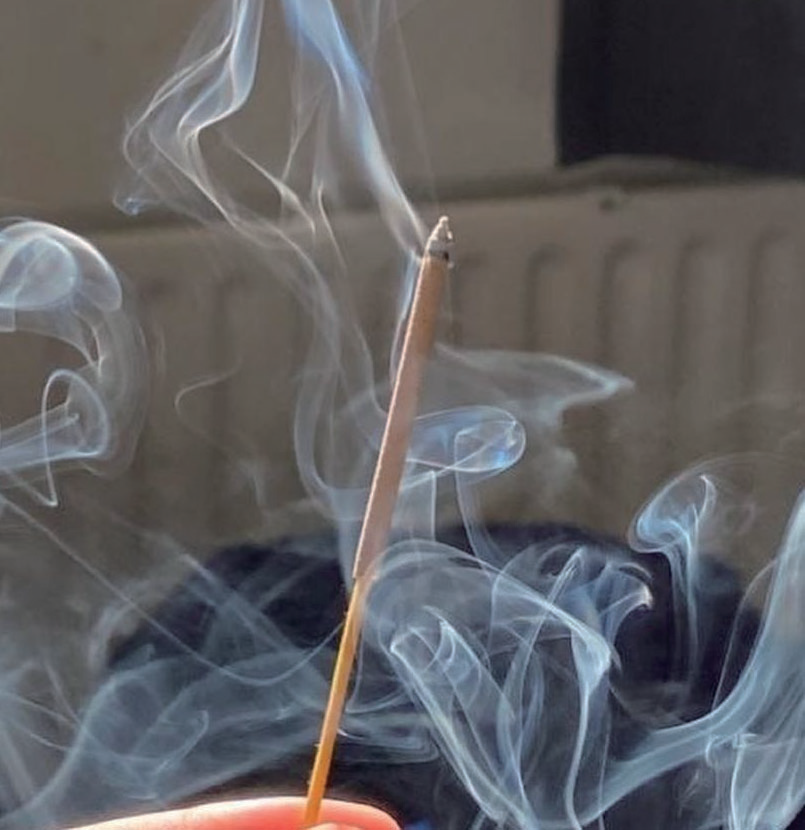
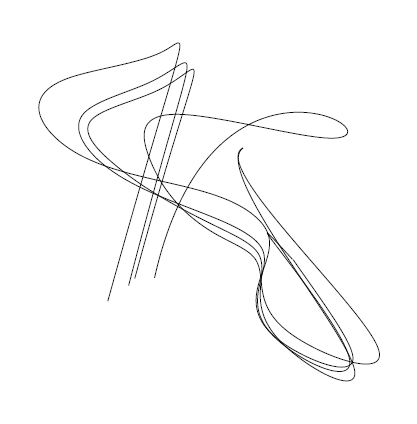

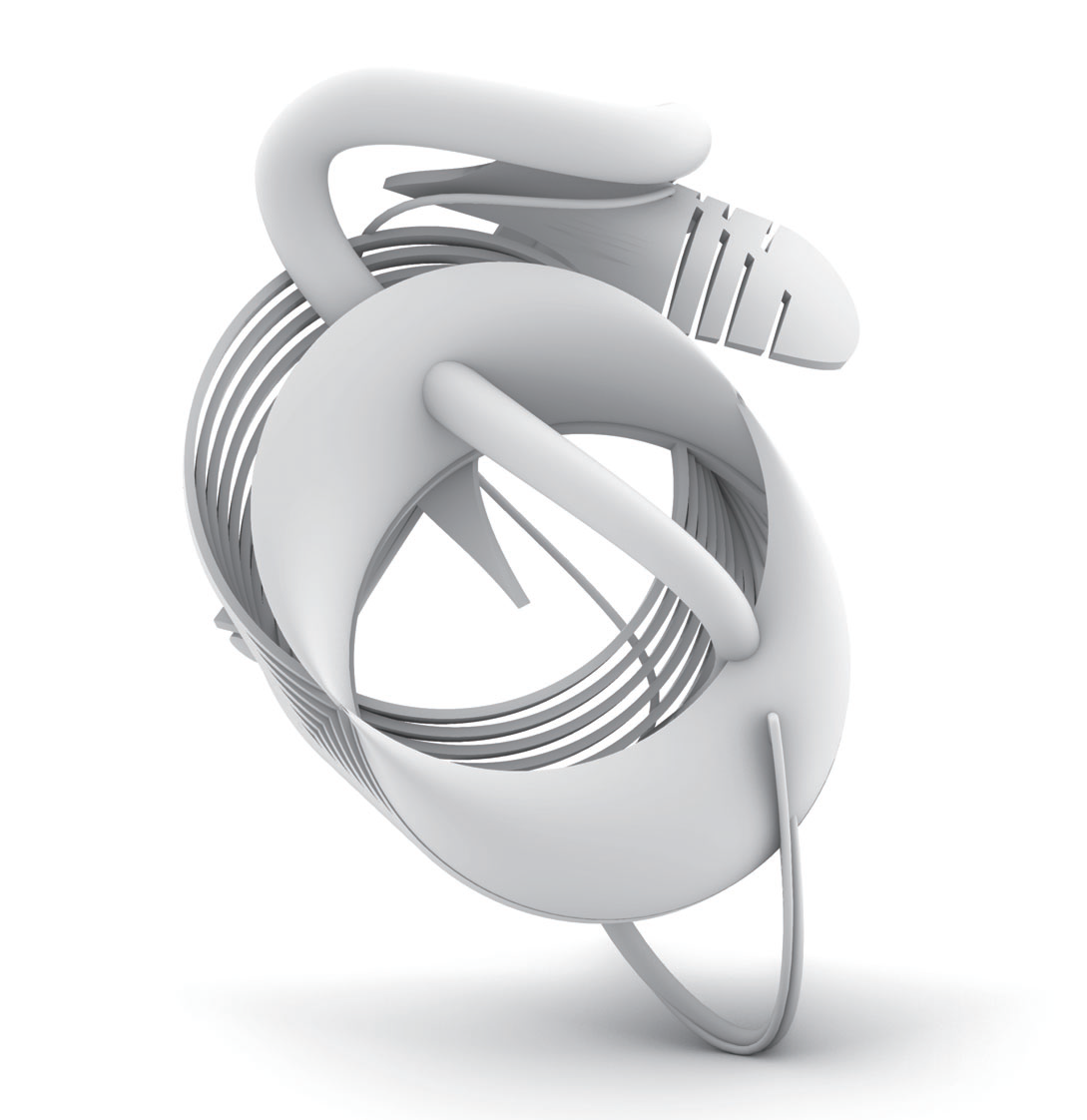
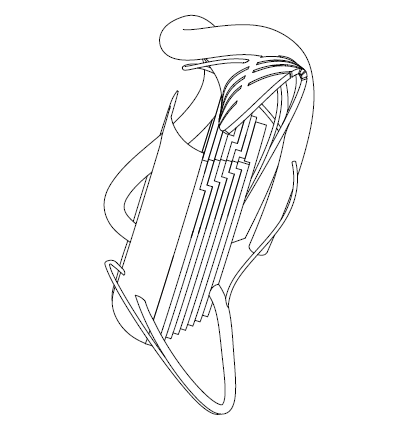
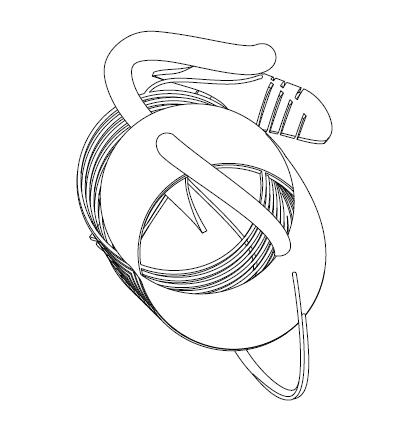
"틈과 대칭", ⓒJinYi Shin, 20, ⓒSoyeon Choi, 22, Digital
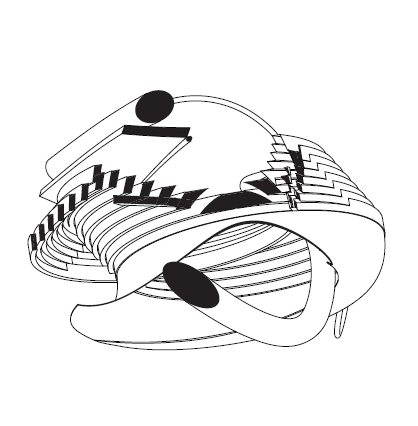
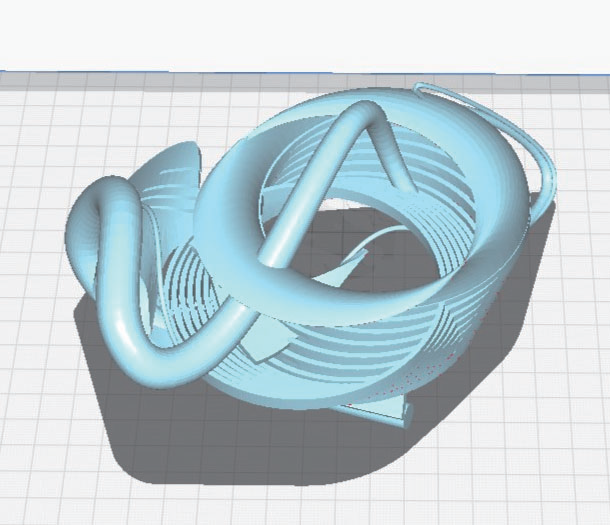
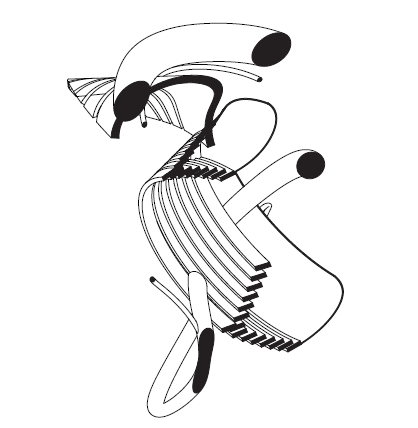
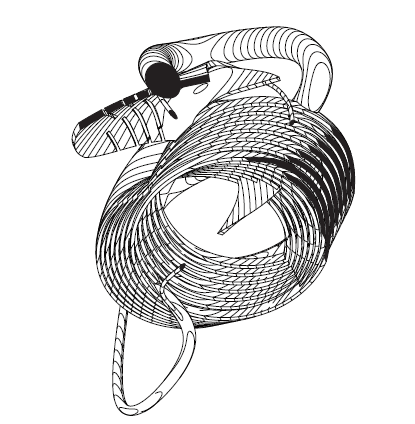
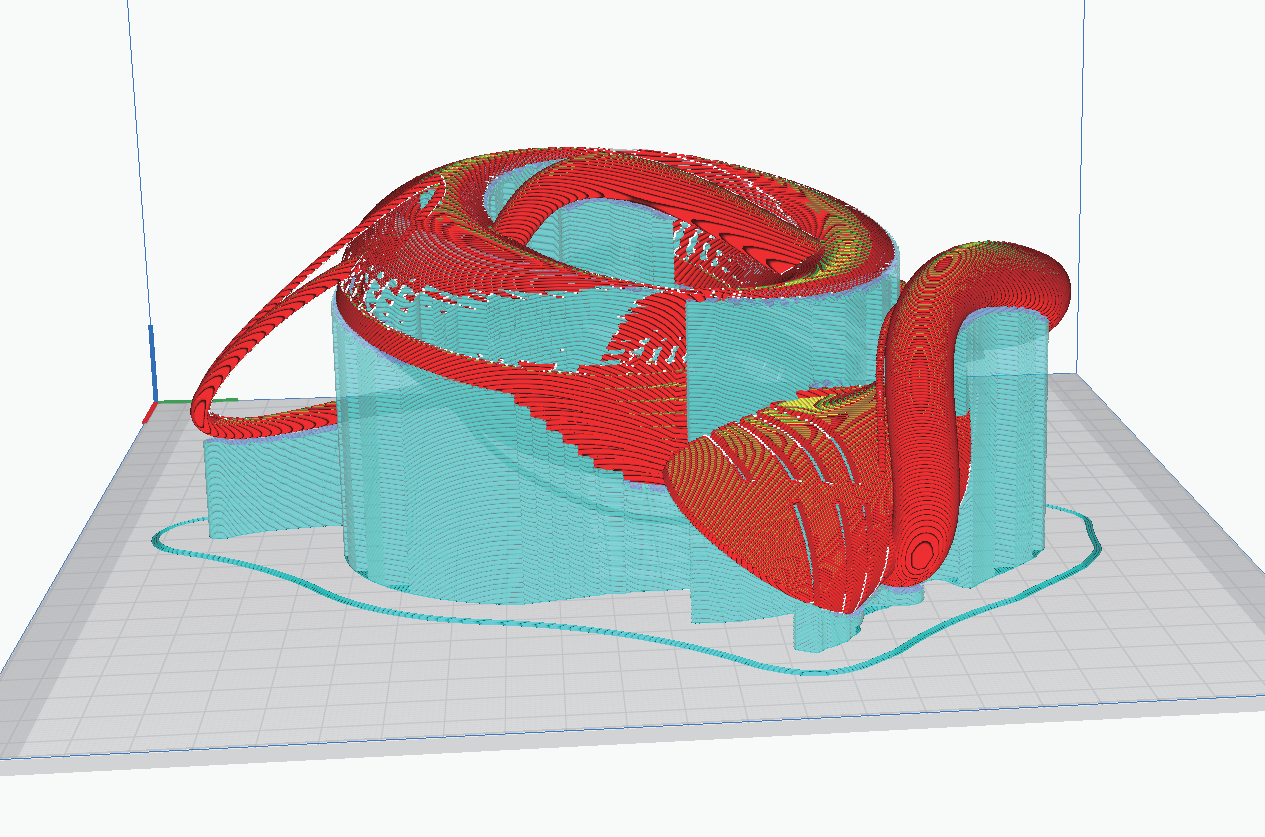
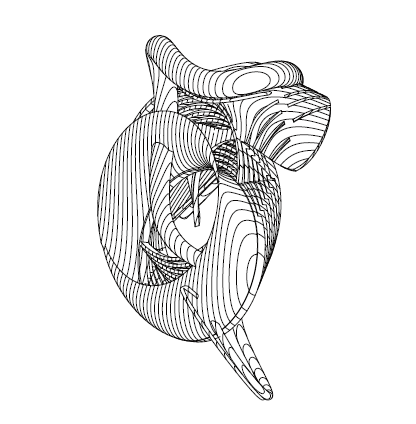
"틈과 대칭", ⓒJinYi Shin, 20, ⓒSoyeon Choi, 22, Digital
"틈과 대칭"
Primary gesture (design language)
Incomplete ring with an axial slit; nested coils fold through the gap.
Starting source (#1 & #4)
- #1 — Bridge + reflection: arch and mirror-image close to a circle → ring form with a keyed opening.
- #4 — Incense smoke: layered coils and drift → nested loops crossing a light axis.
Reflection (3–5 lines)
- Scaling and rotating ring sectors preserved the gap while varying coil density.
- Top view reads the incomplete circle cleanly; section exposes stacked ribs and offset joints.
- A digital-tectonic assumption (thickened rings + joint keys) emphasizes hierarchy across the slit.